
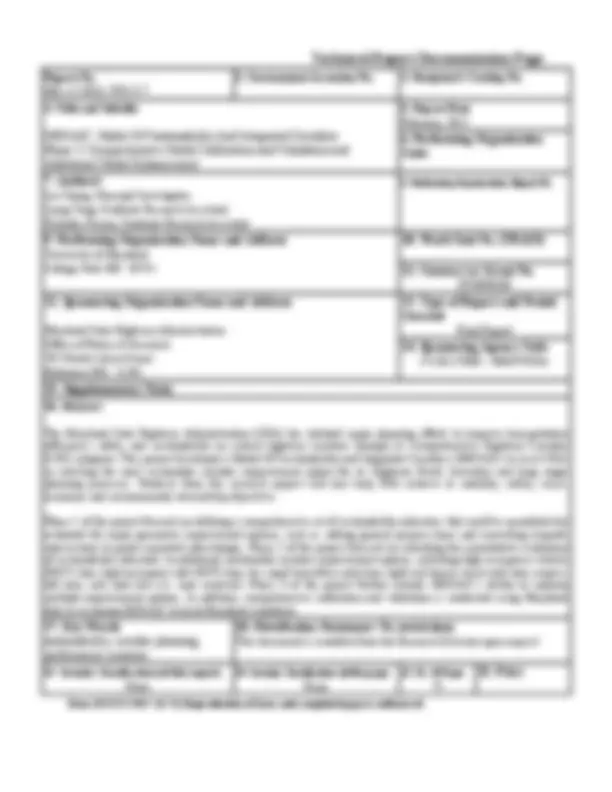
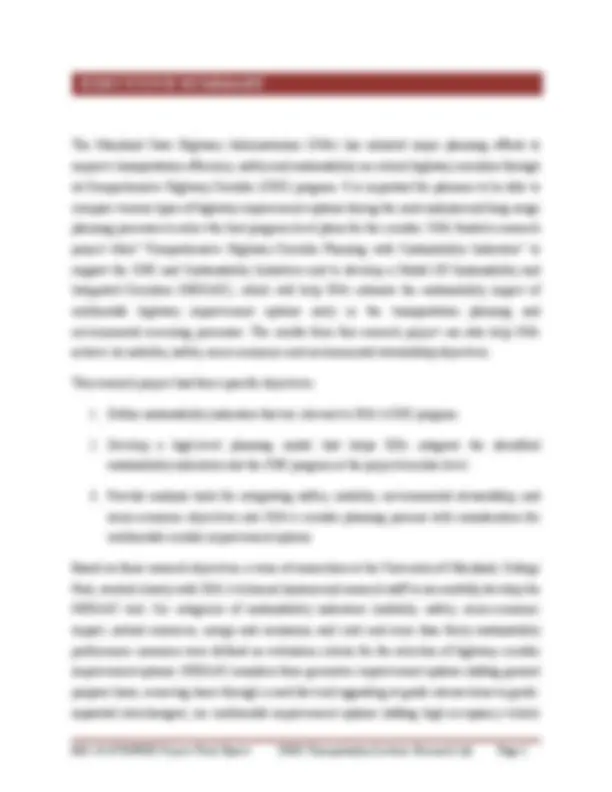
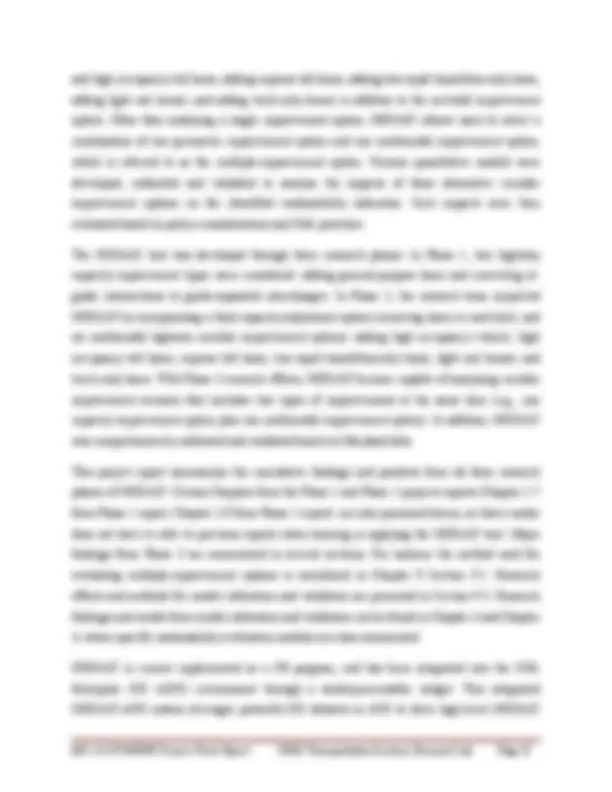
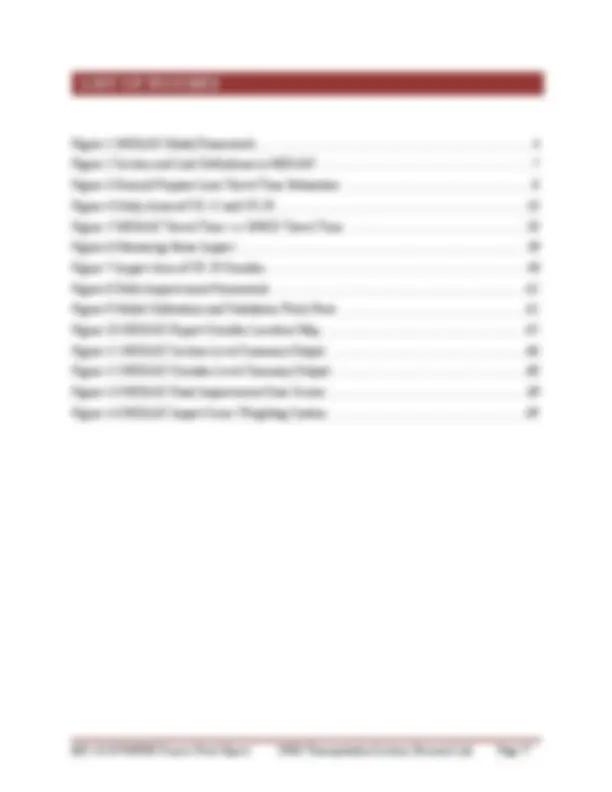
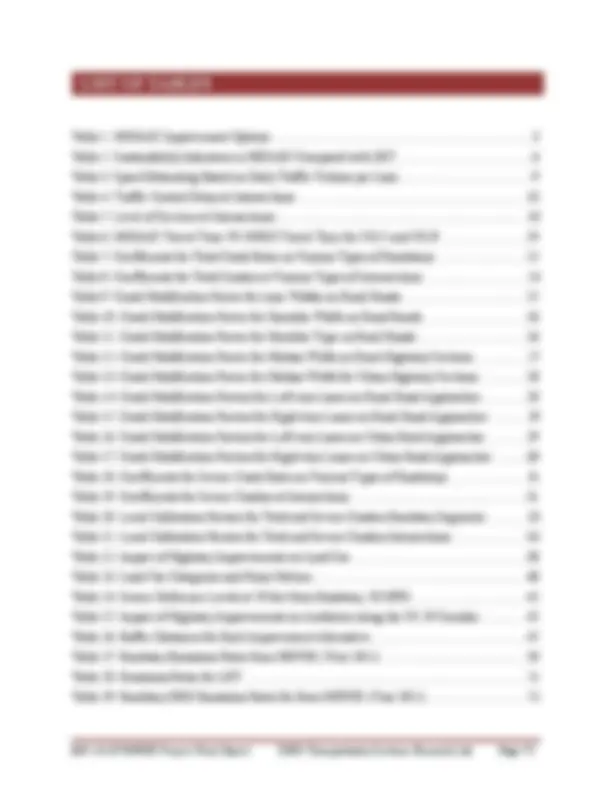
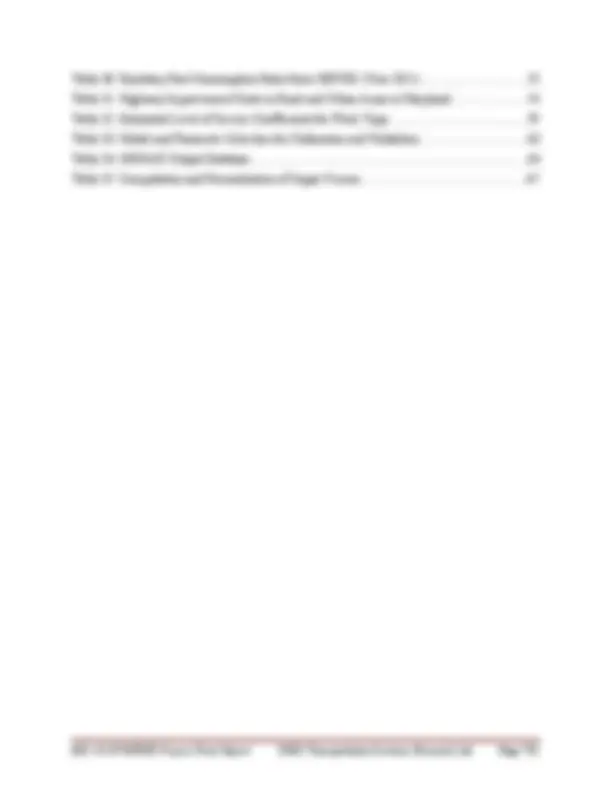
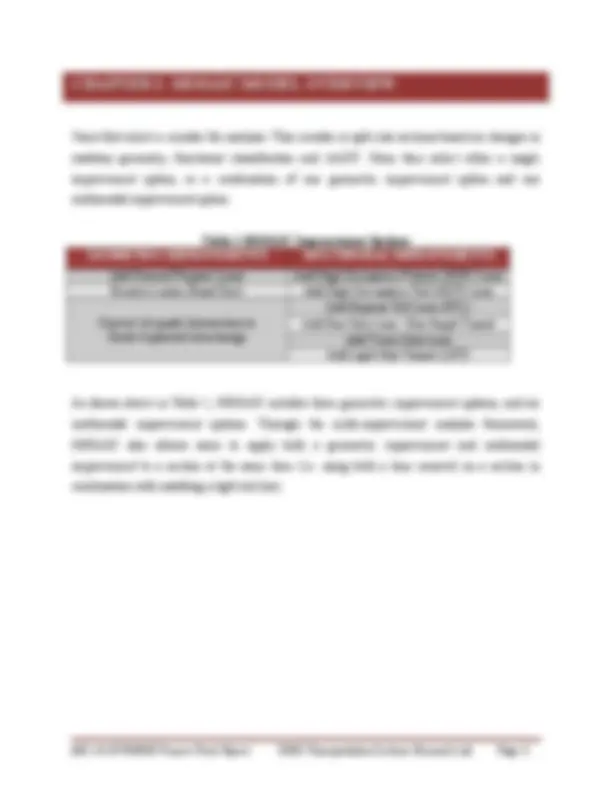
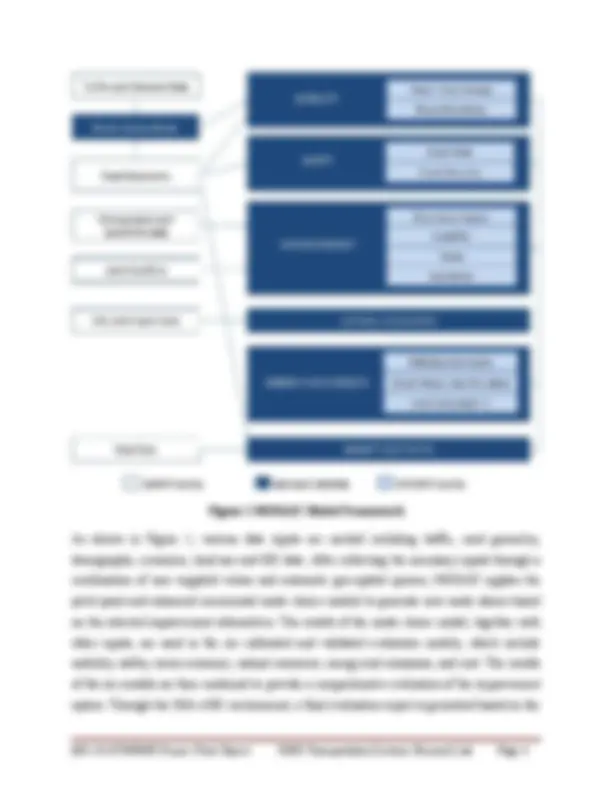

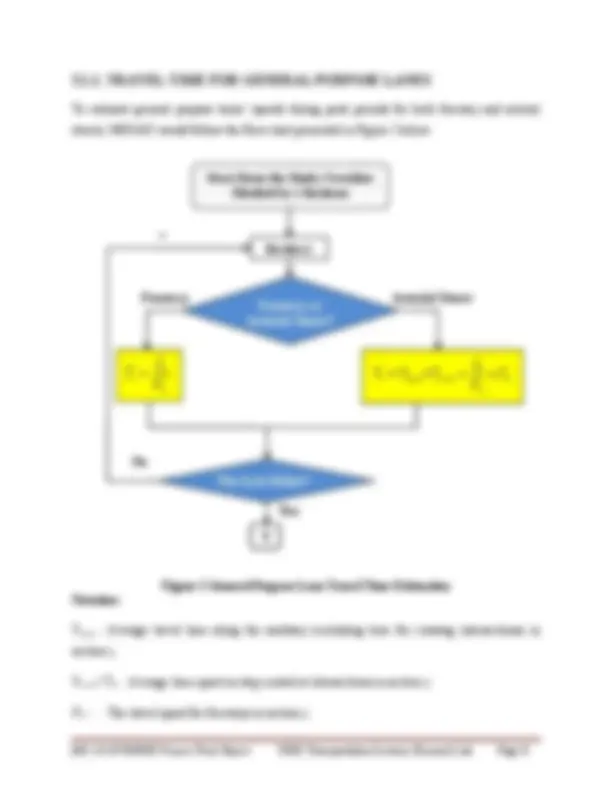
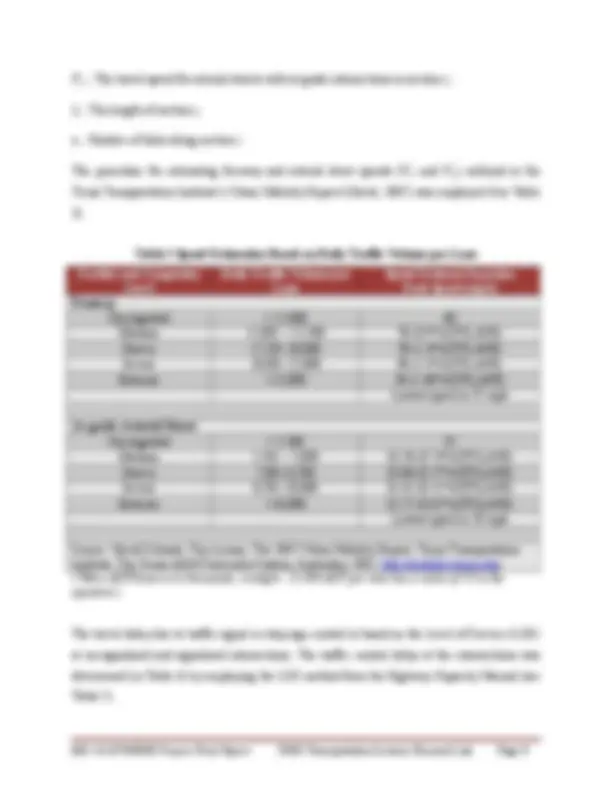
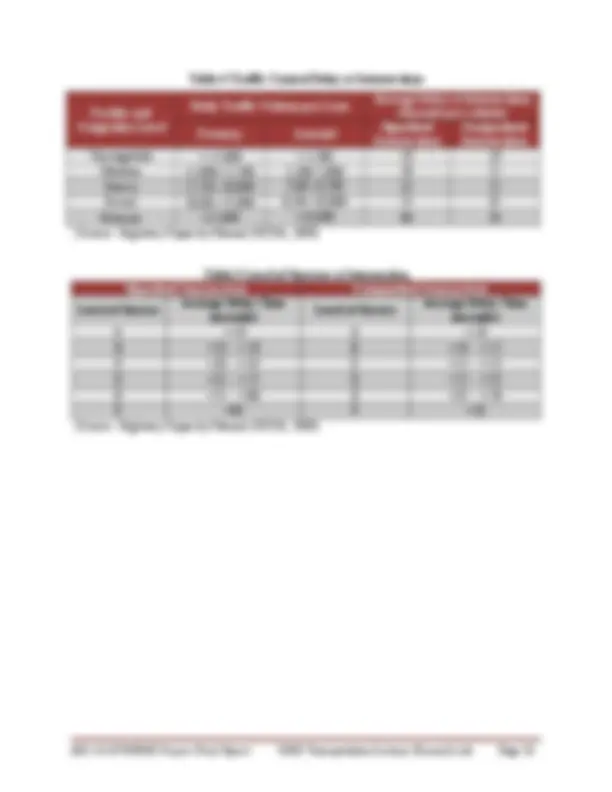
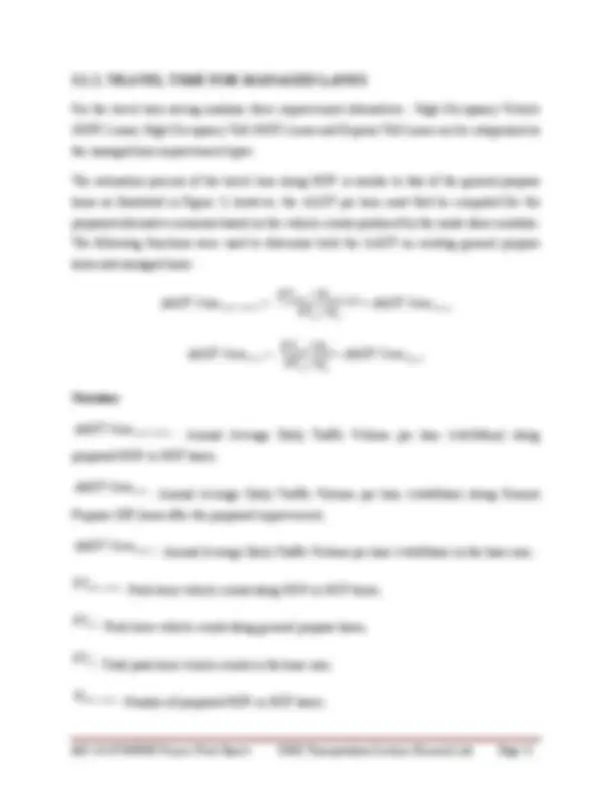
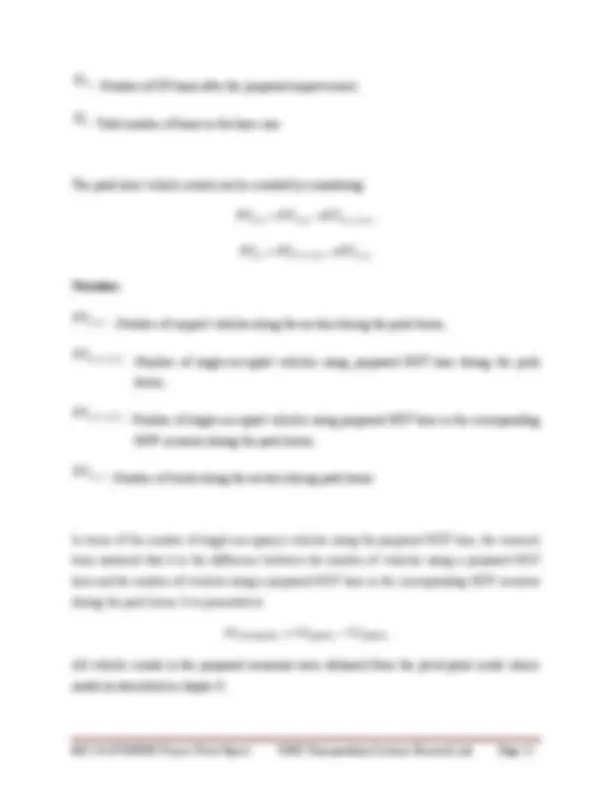
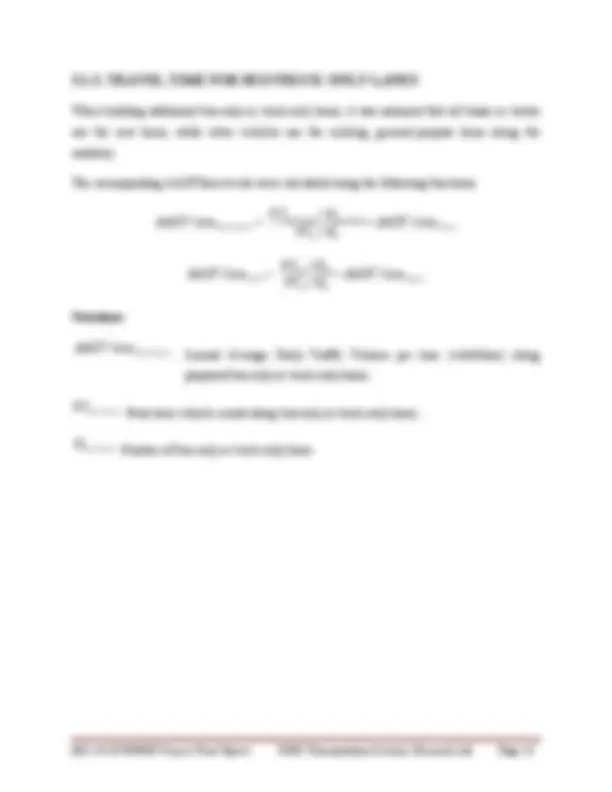
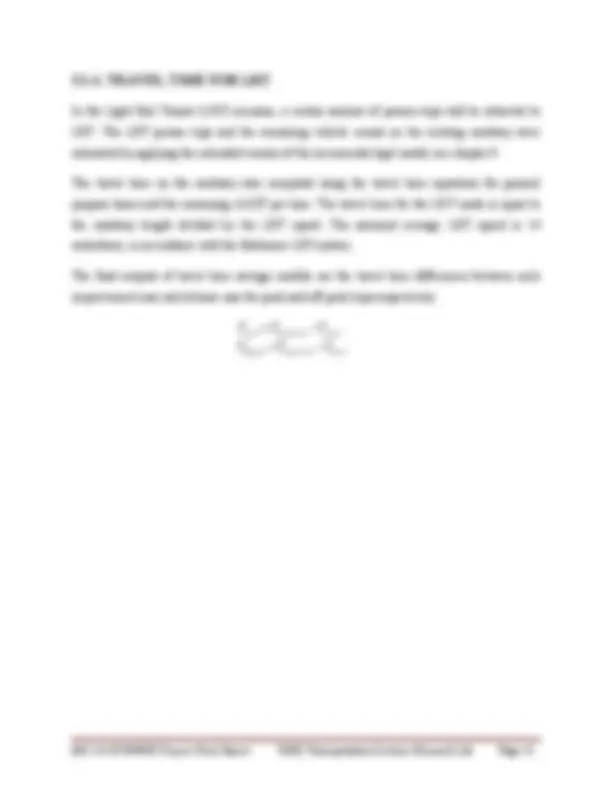
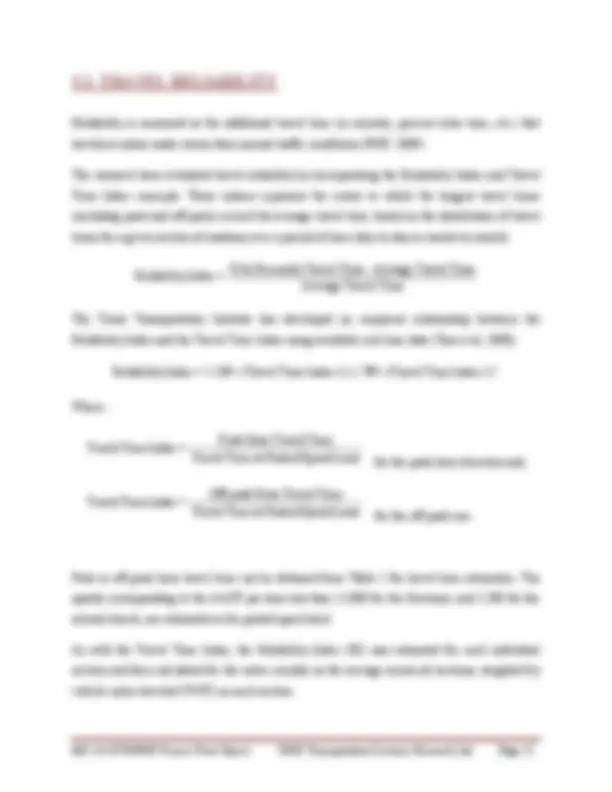
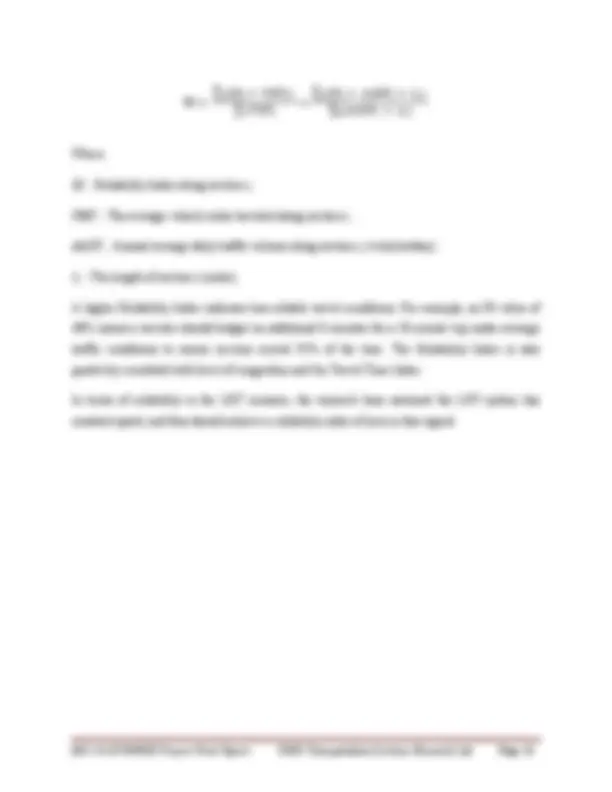
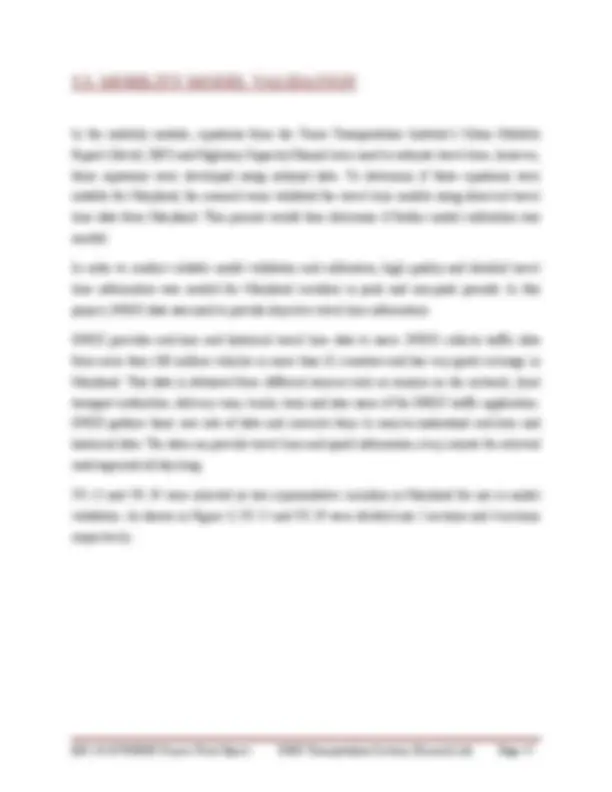
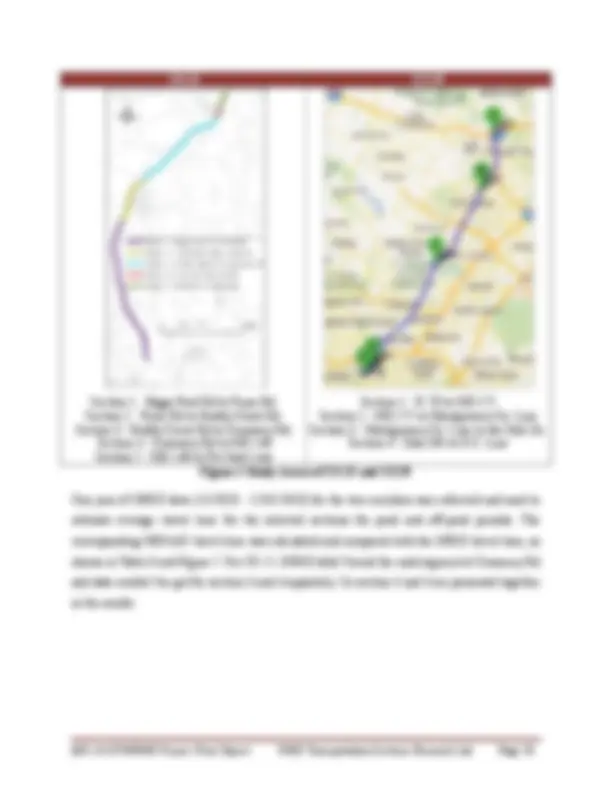
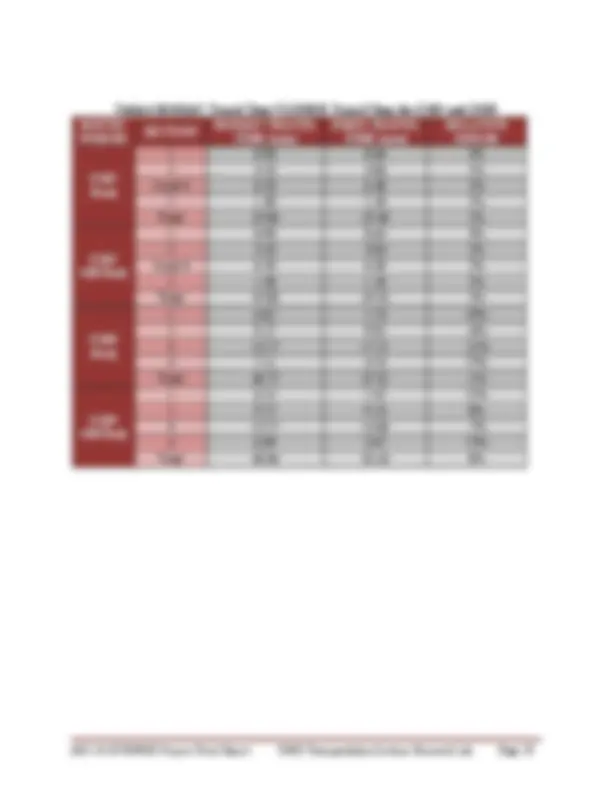
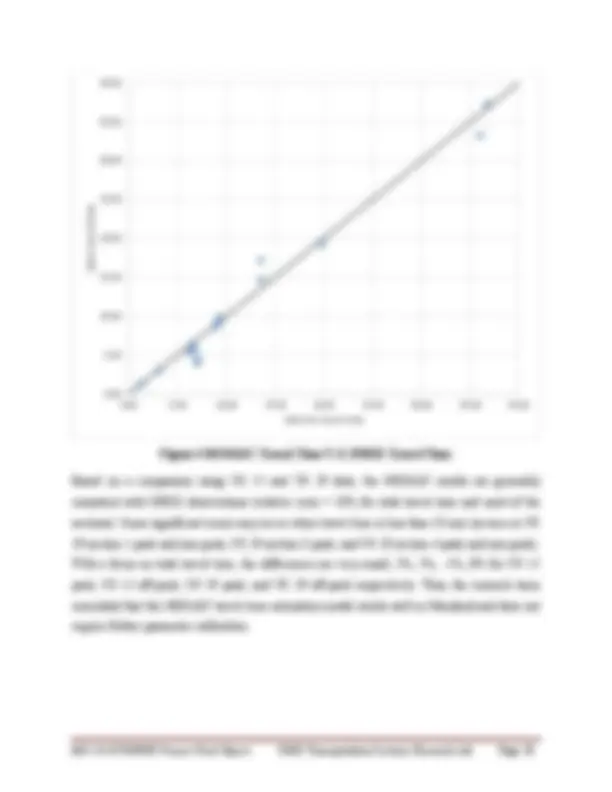
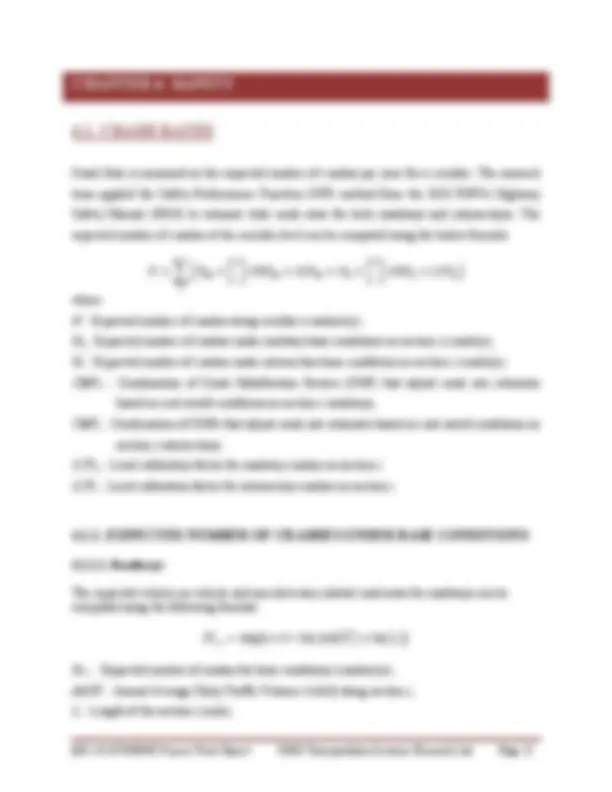
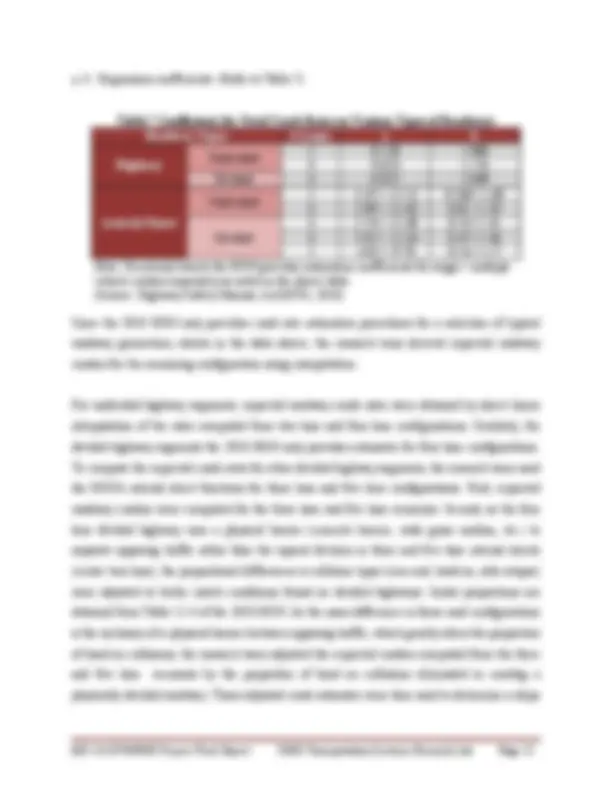
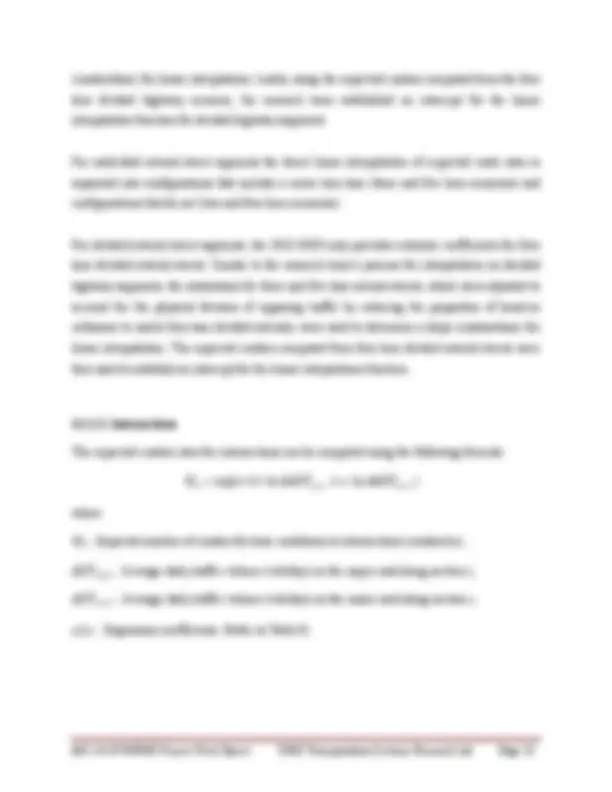
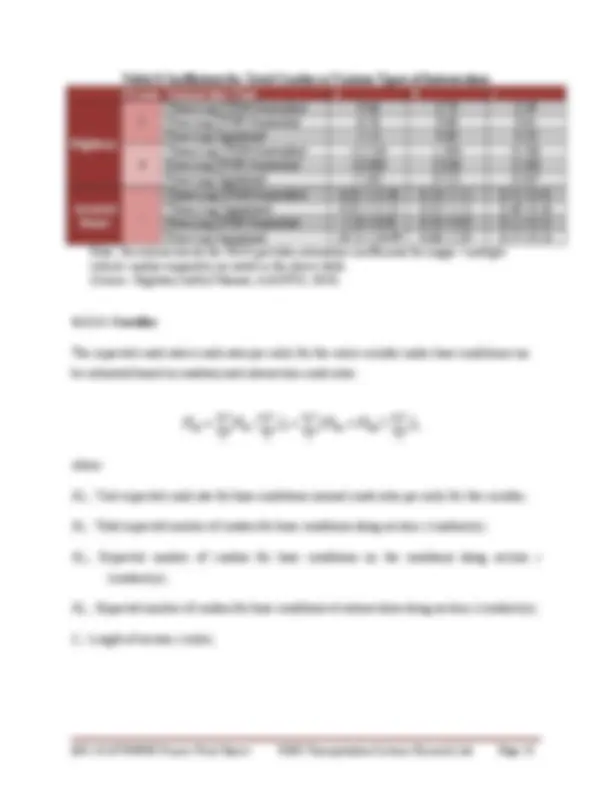
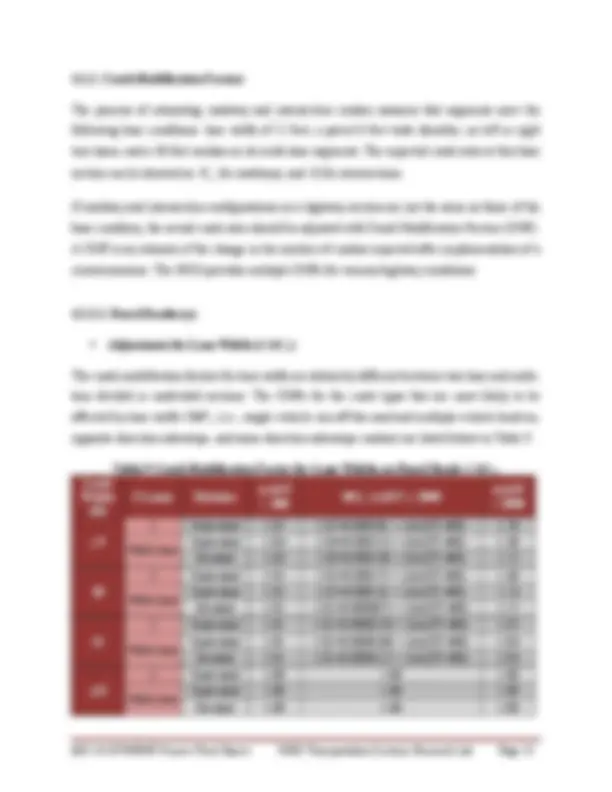
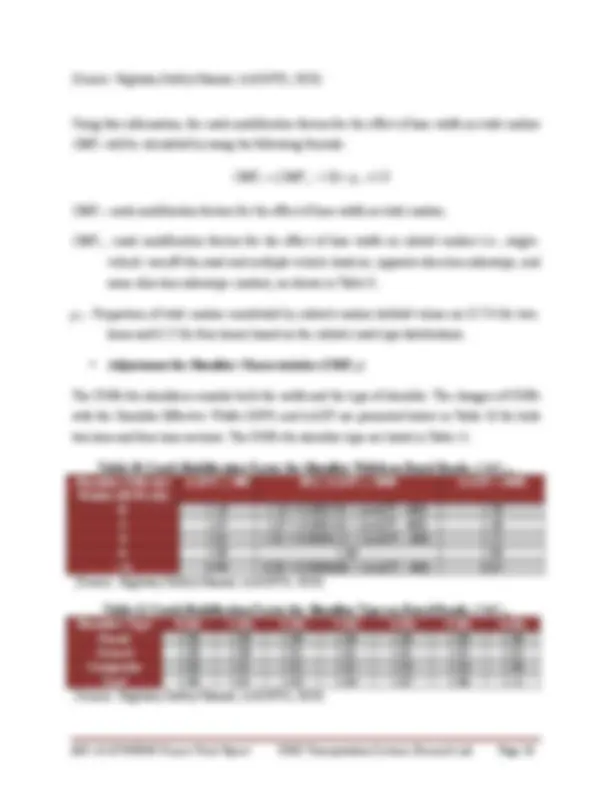

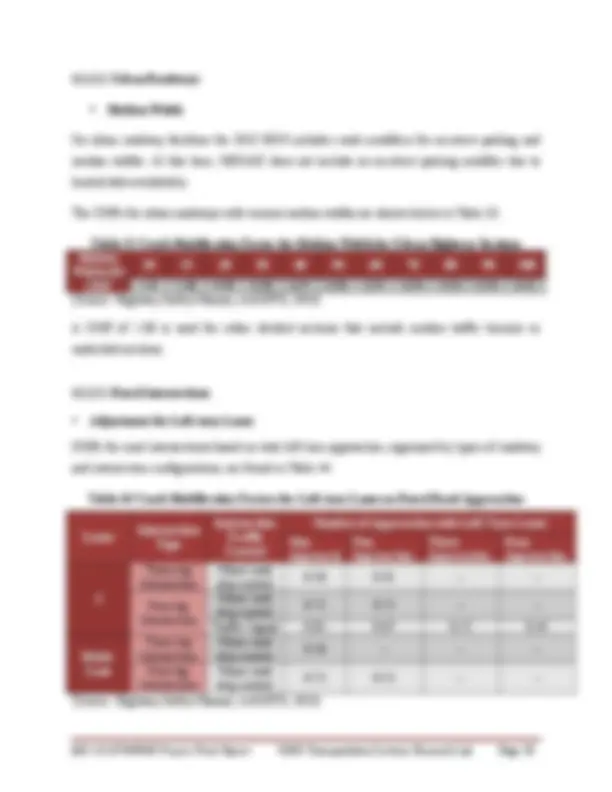
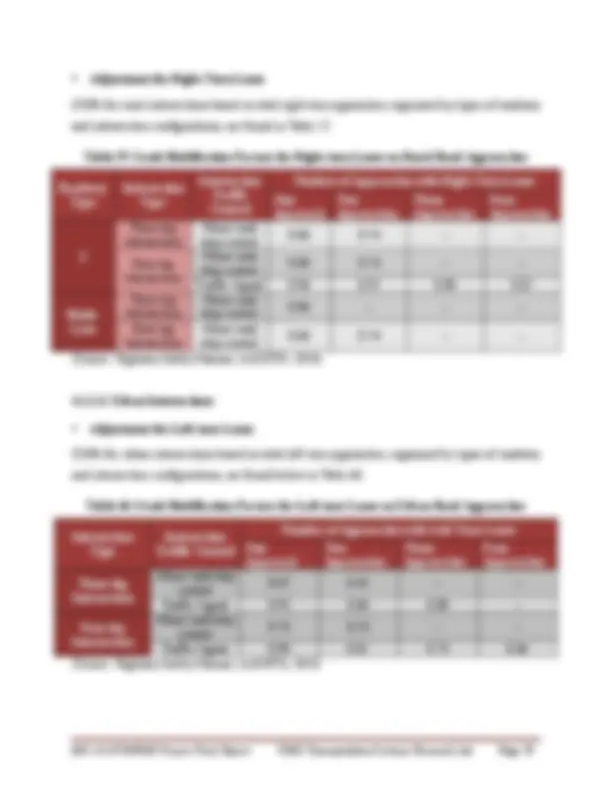
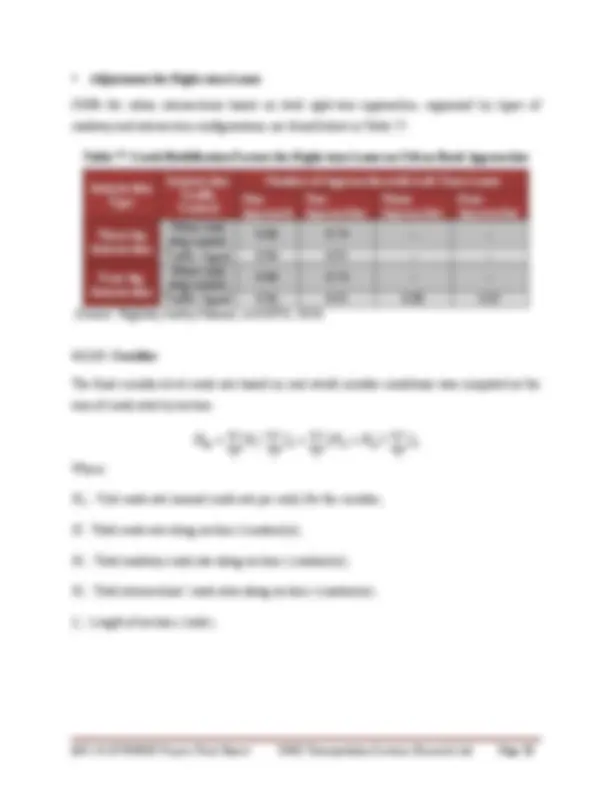
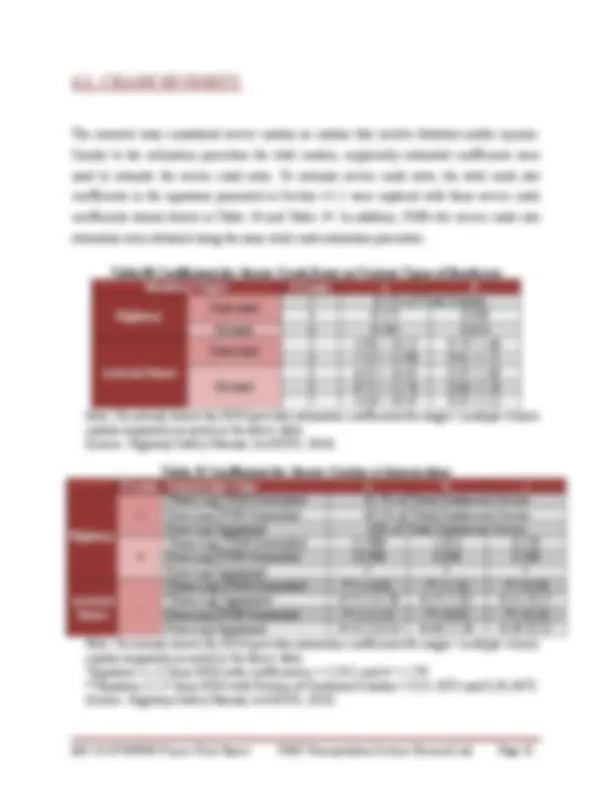


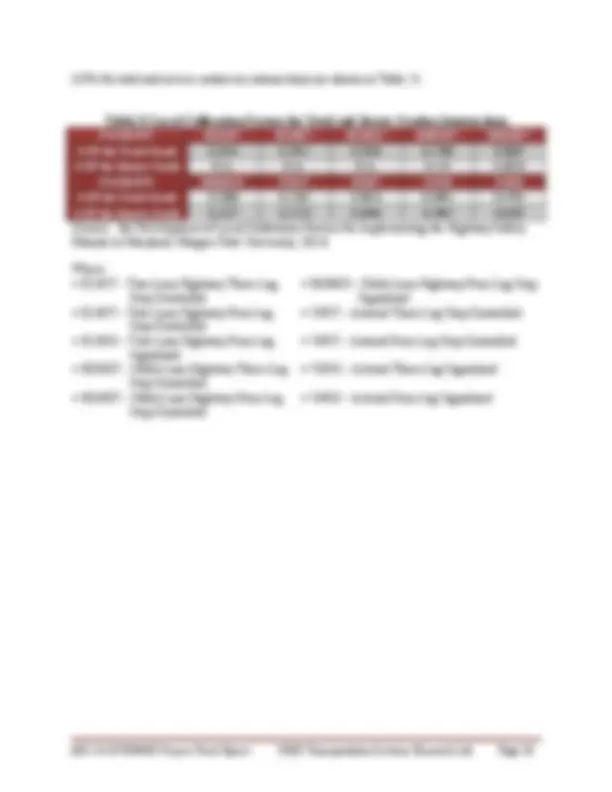
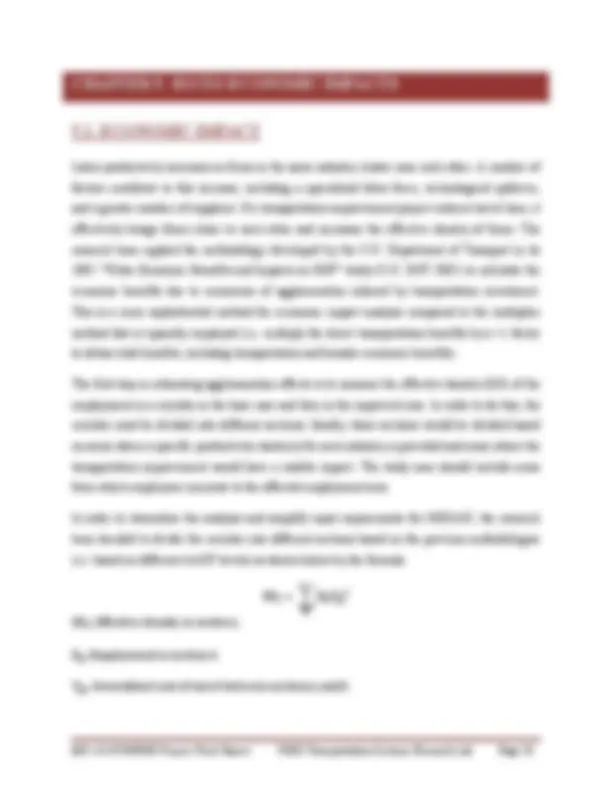
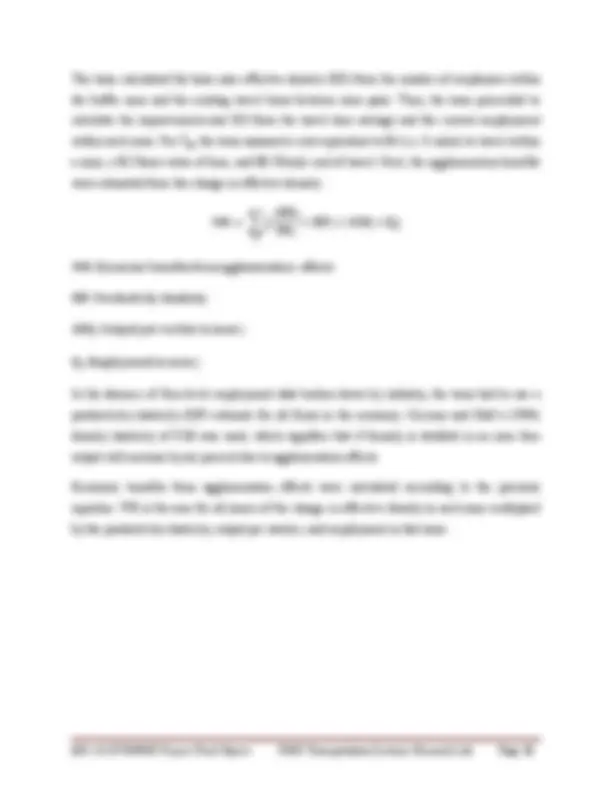
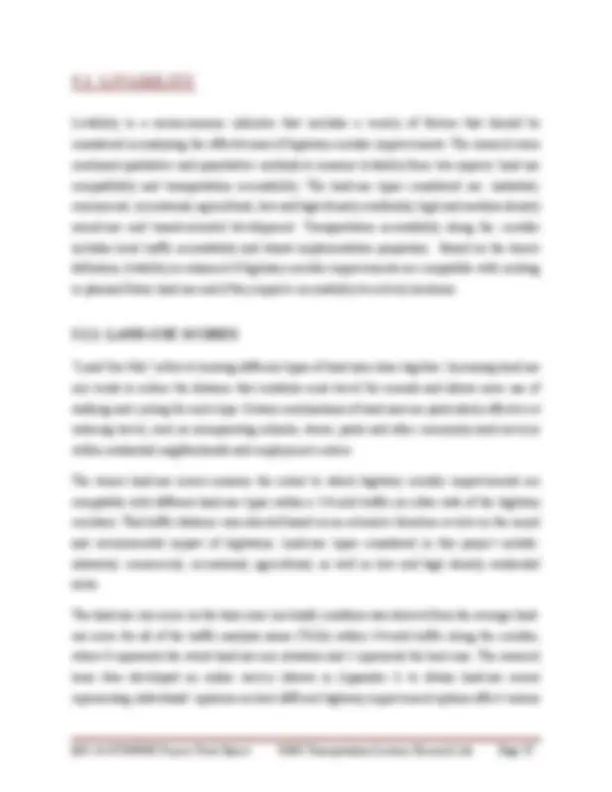
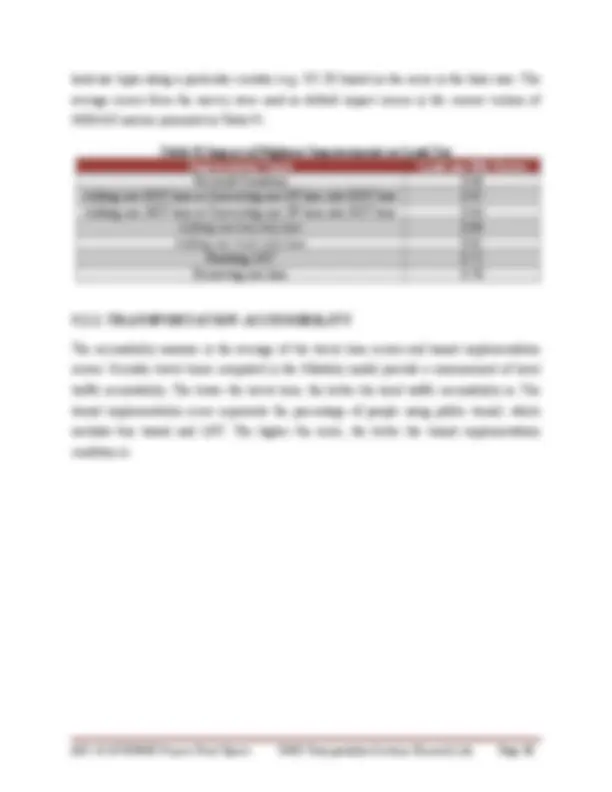
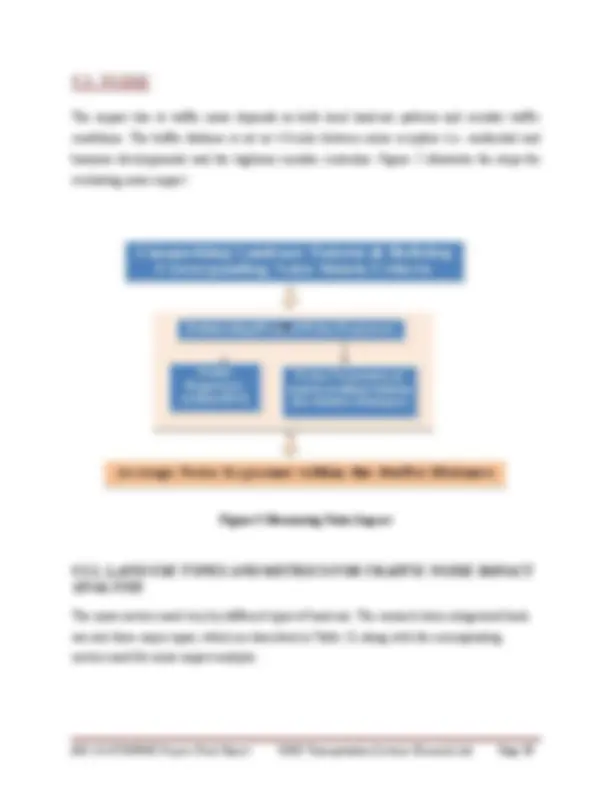
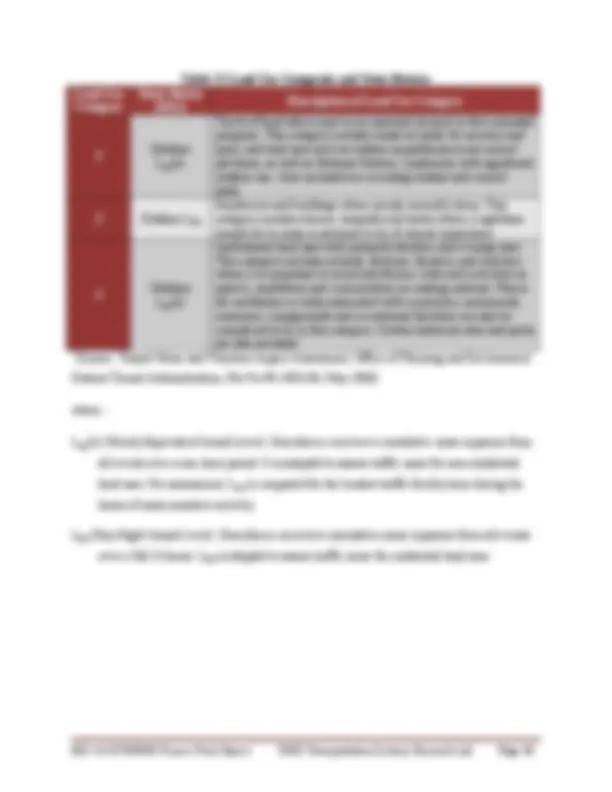
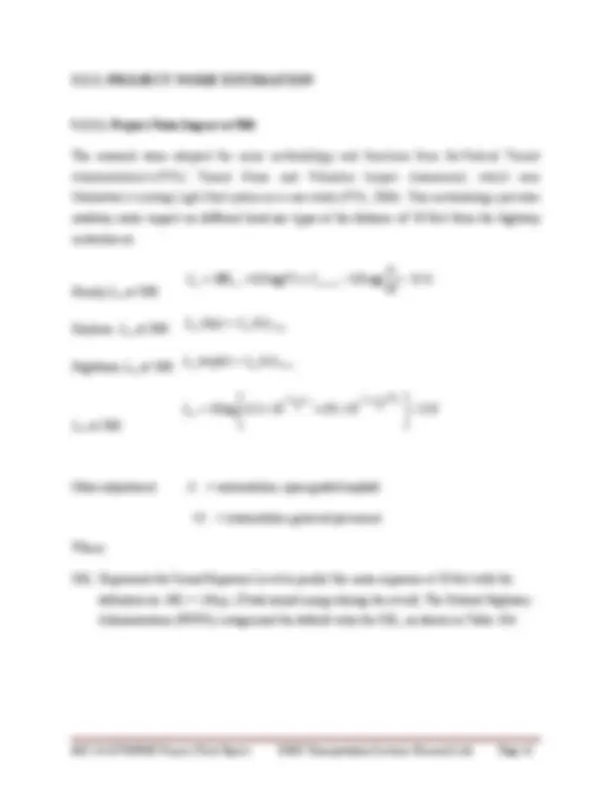
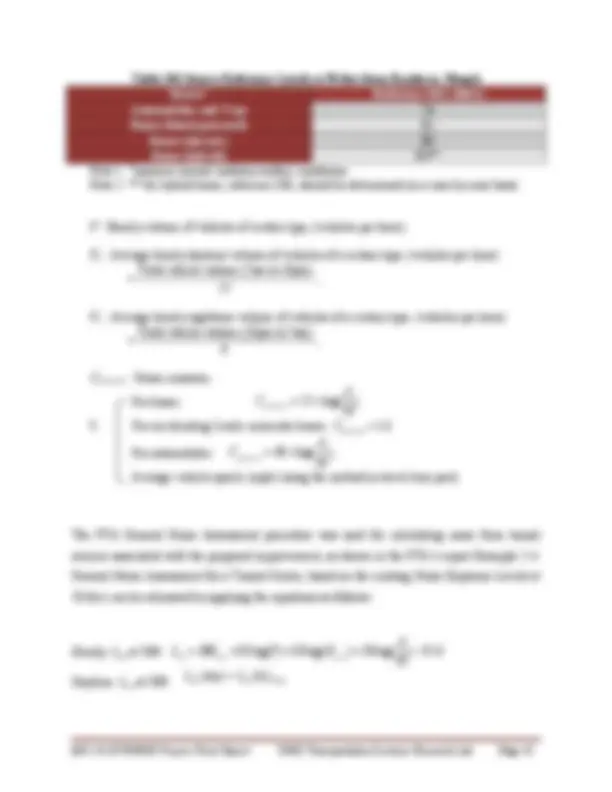
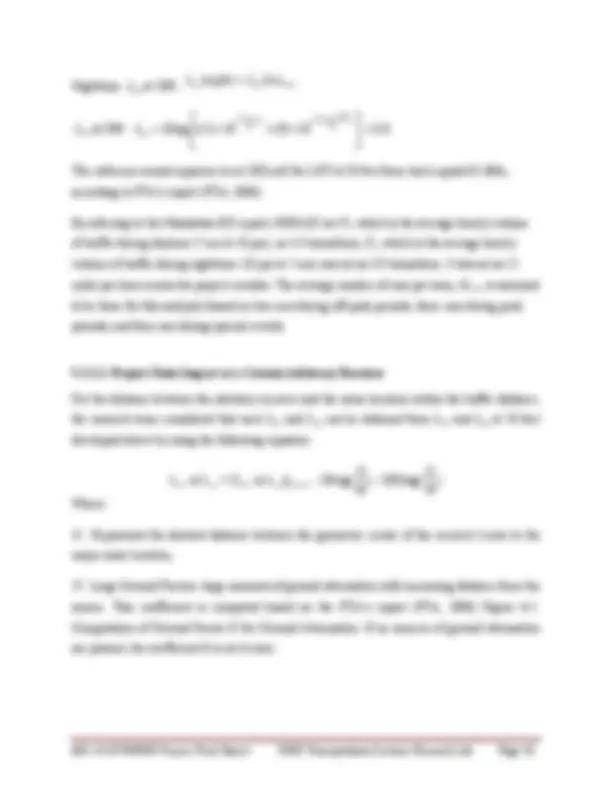
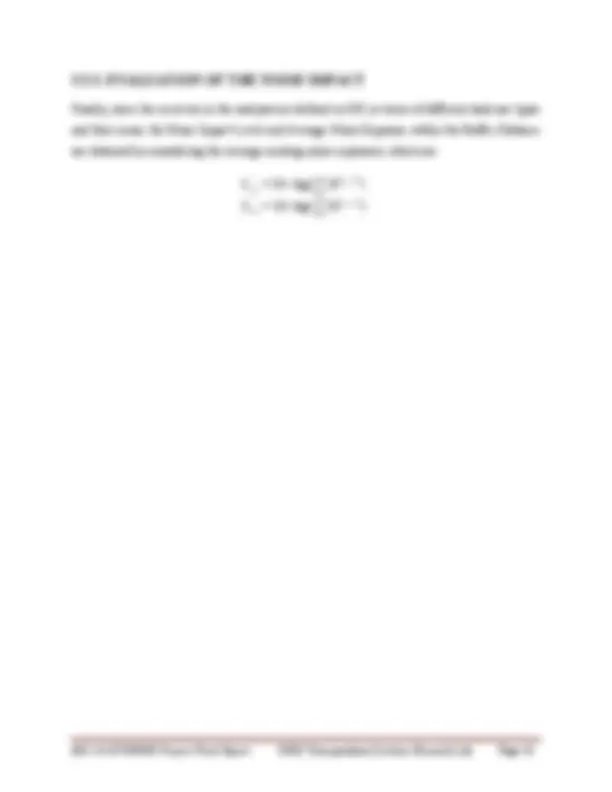
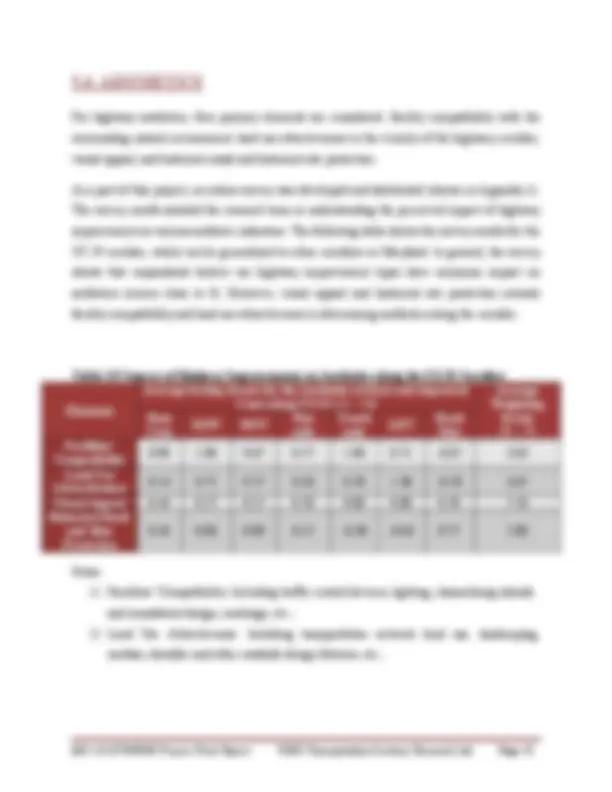
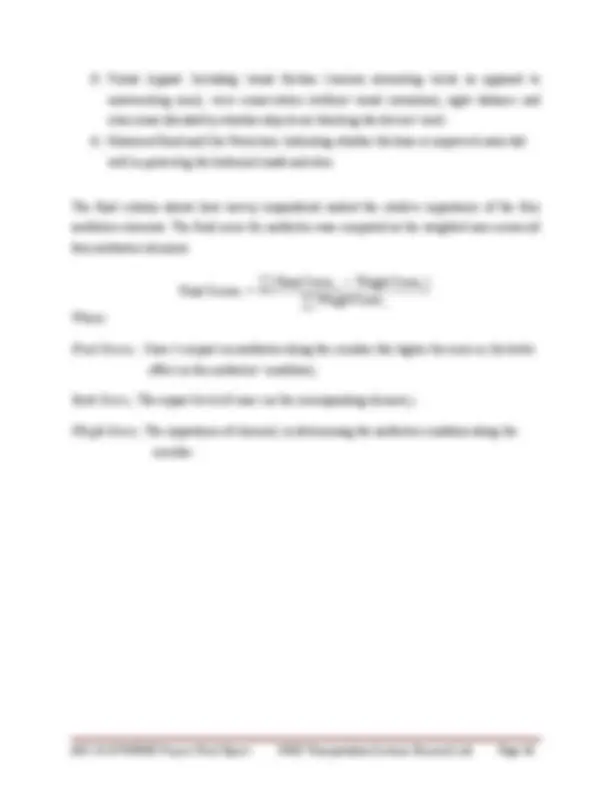
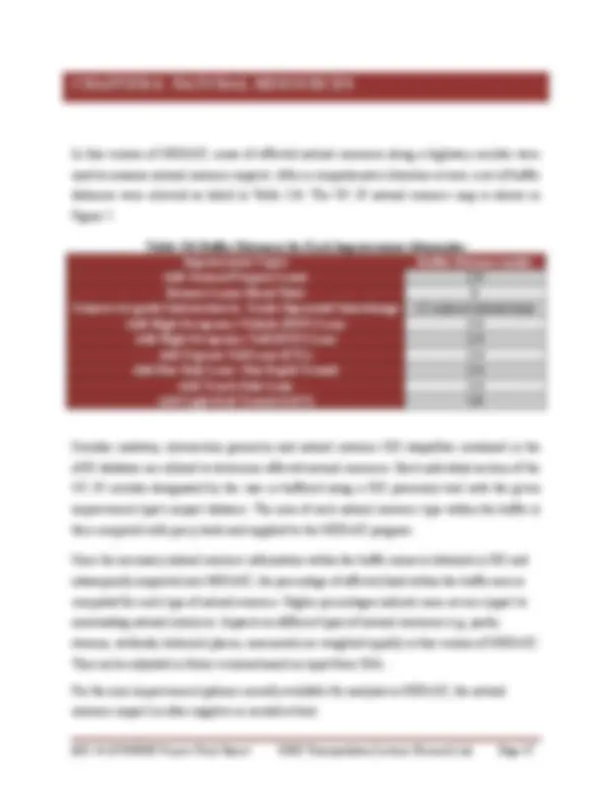
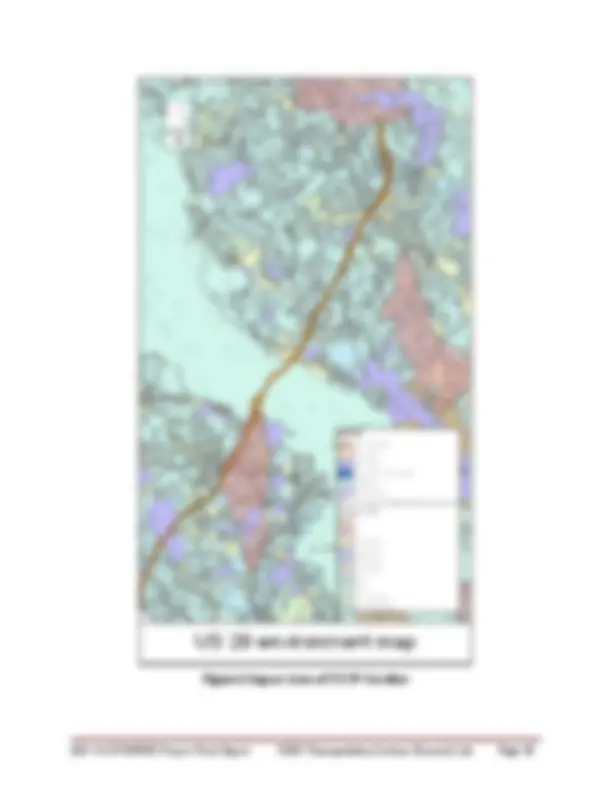
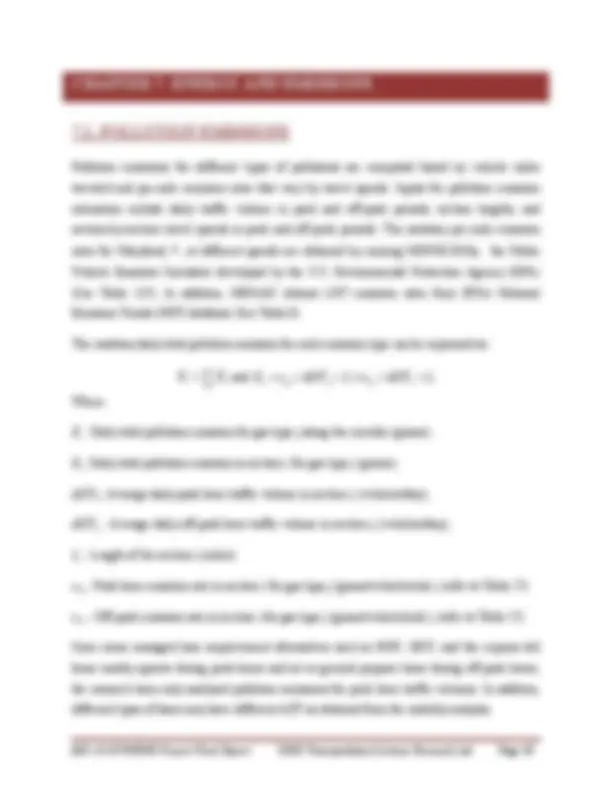
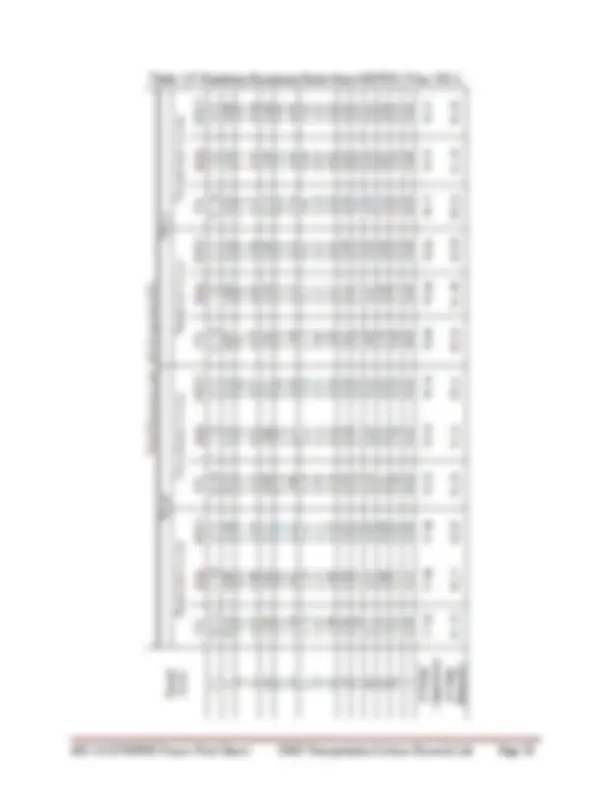

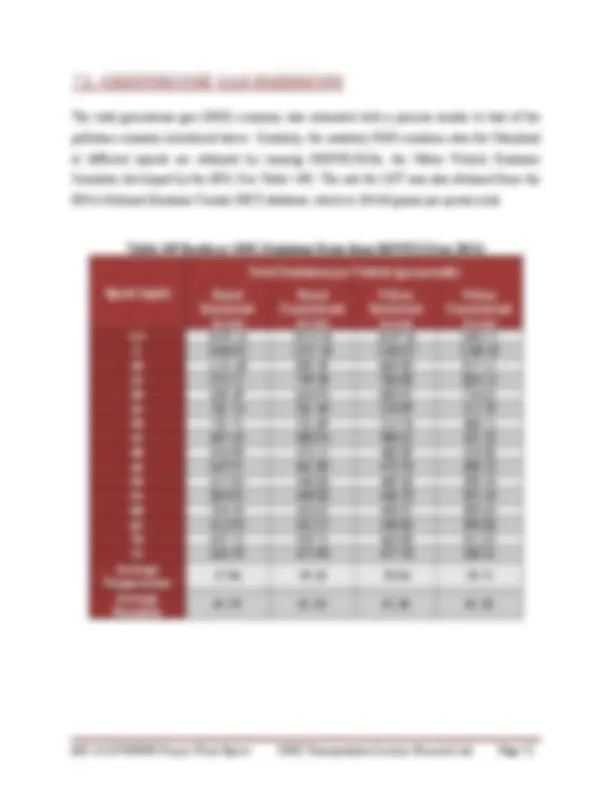
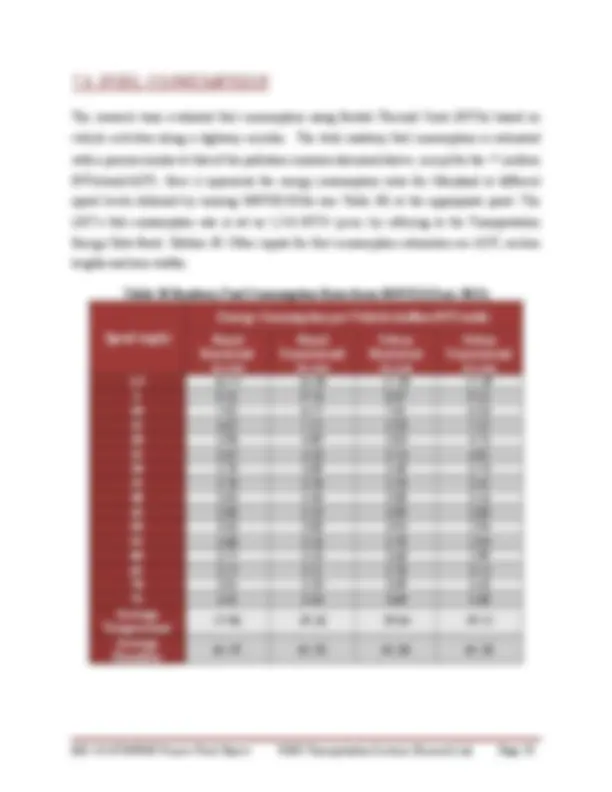
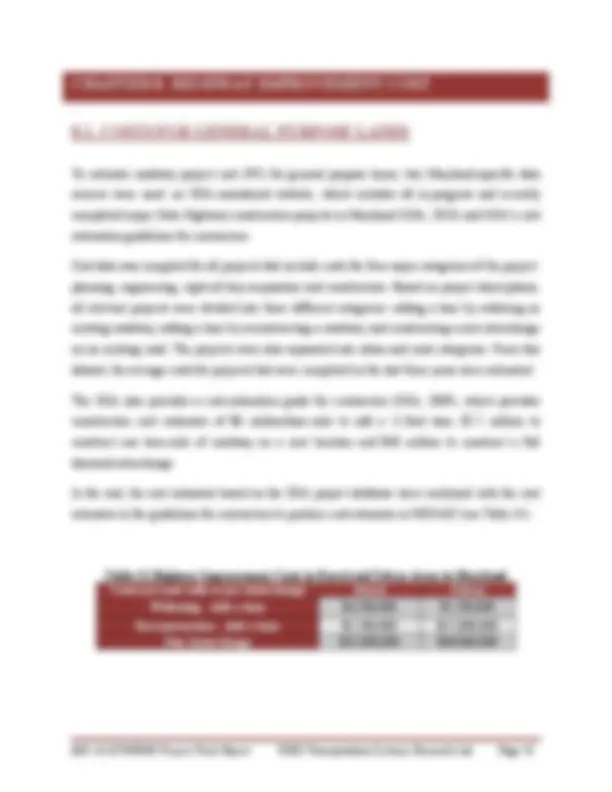
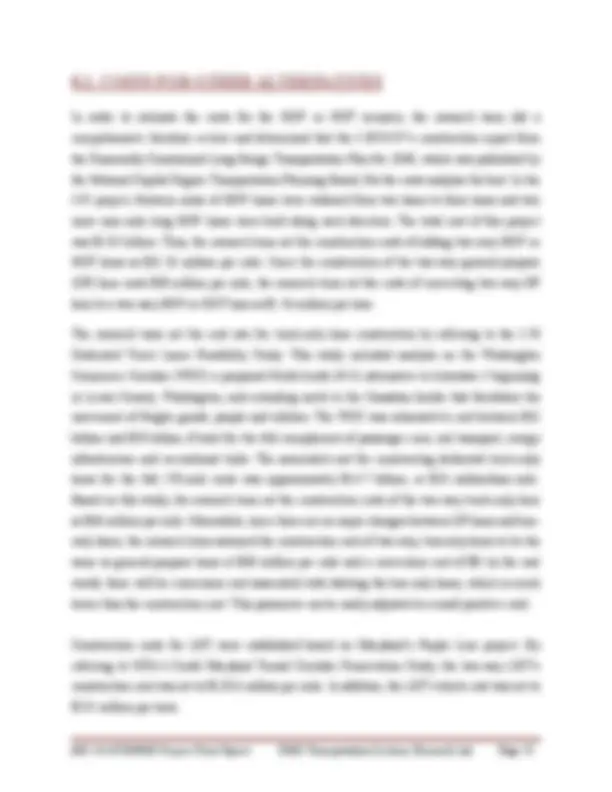
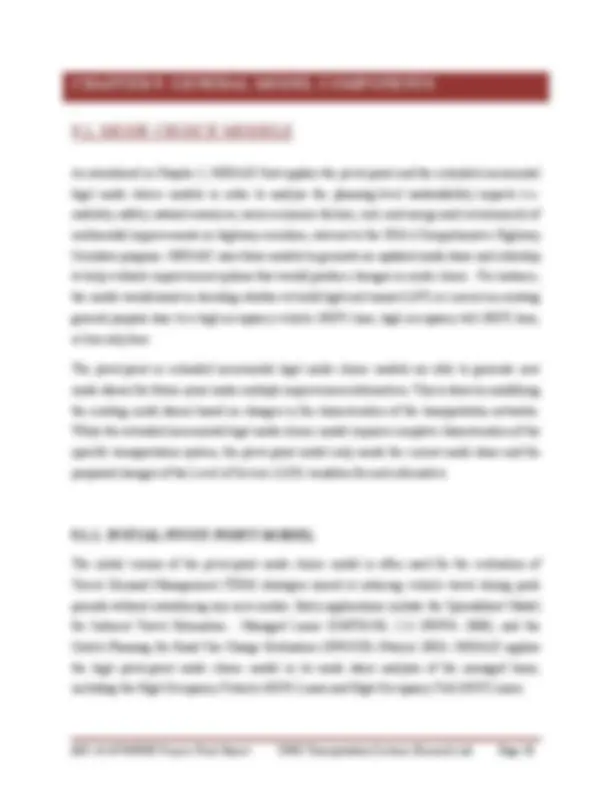
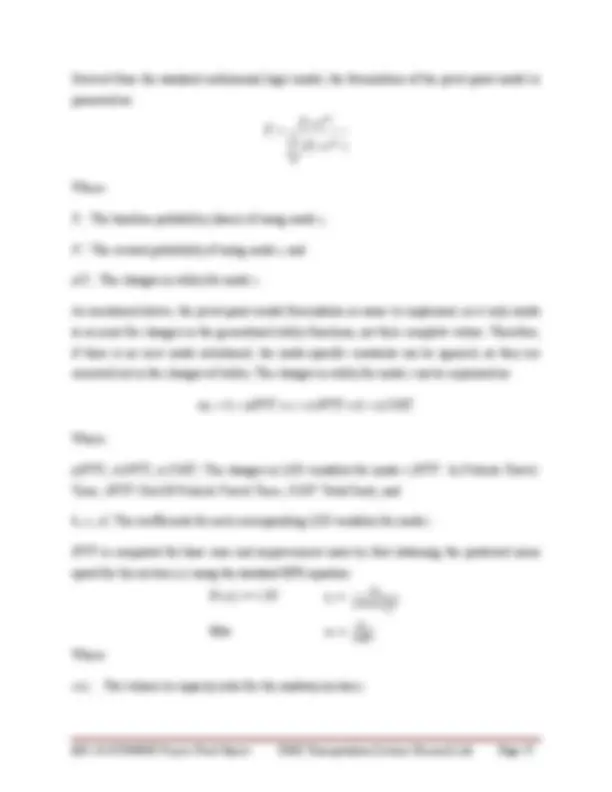
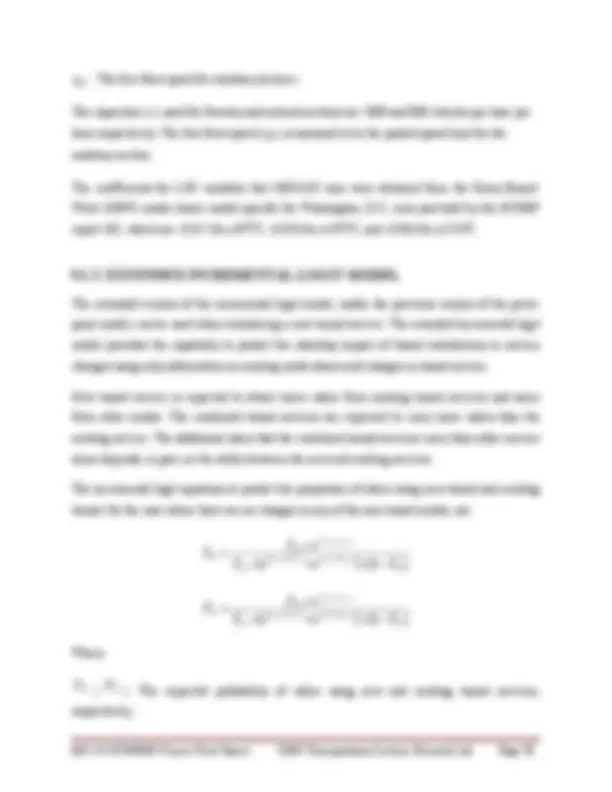
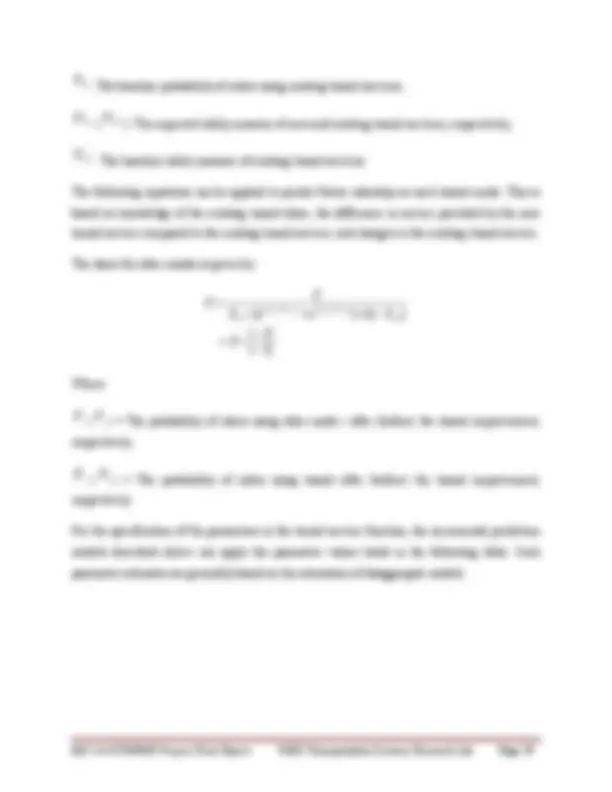
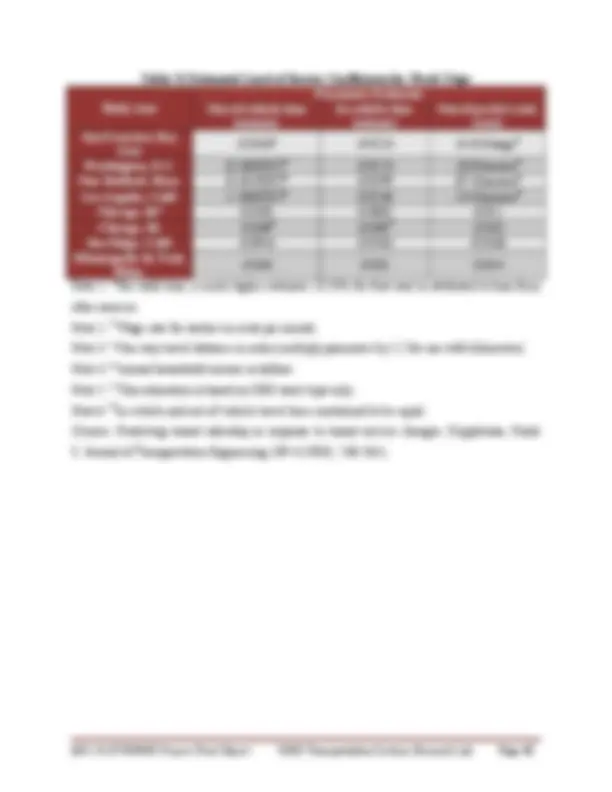
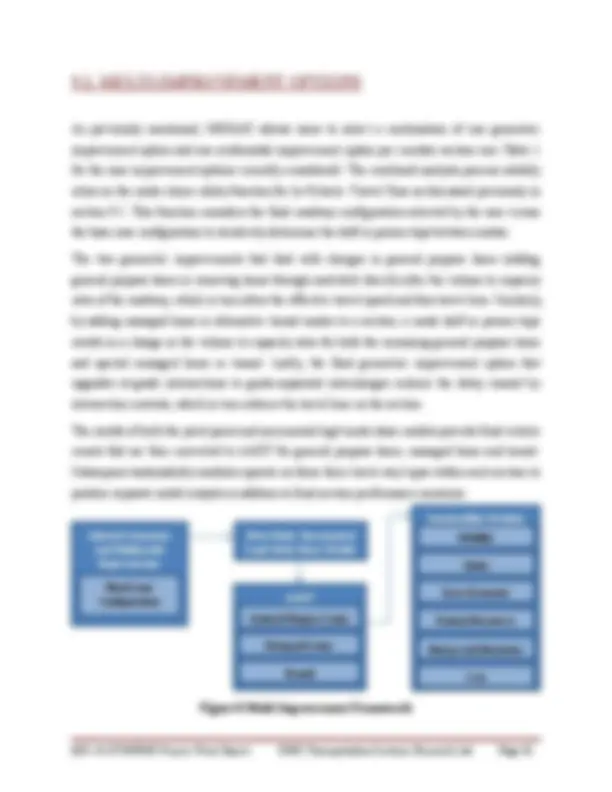
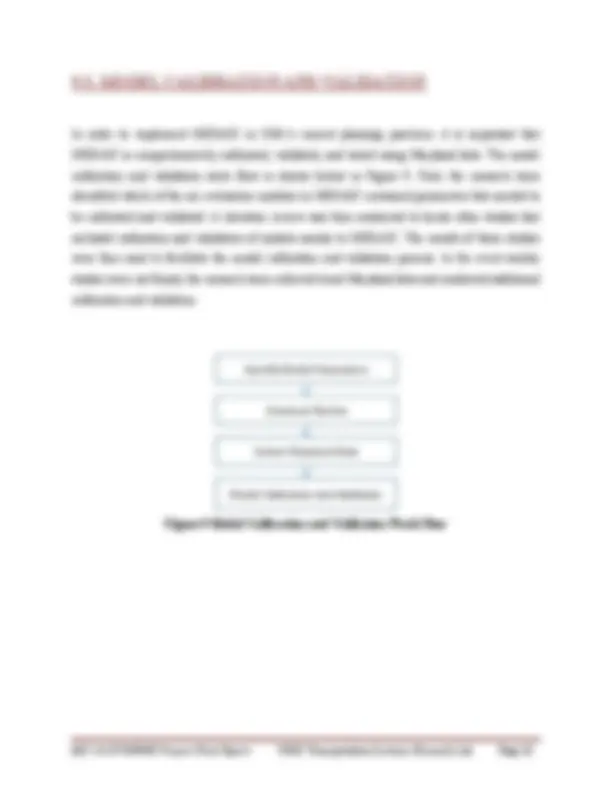
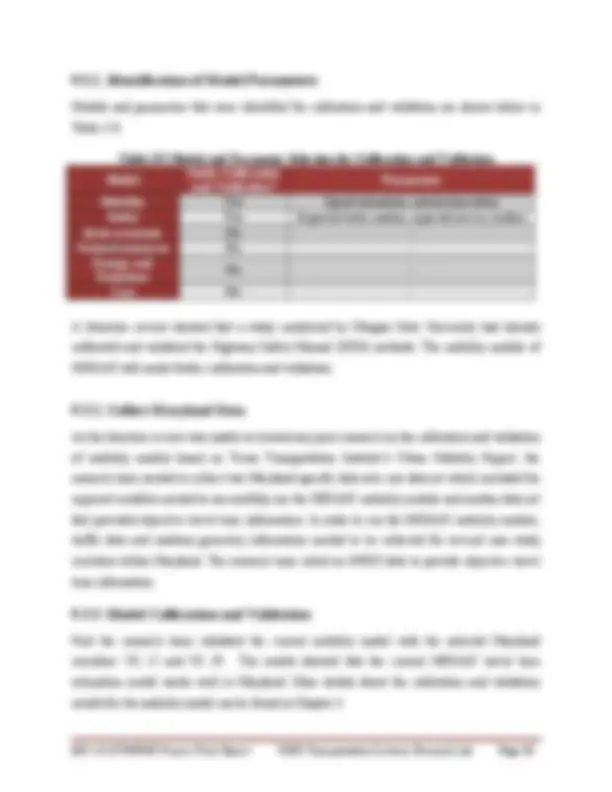
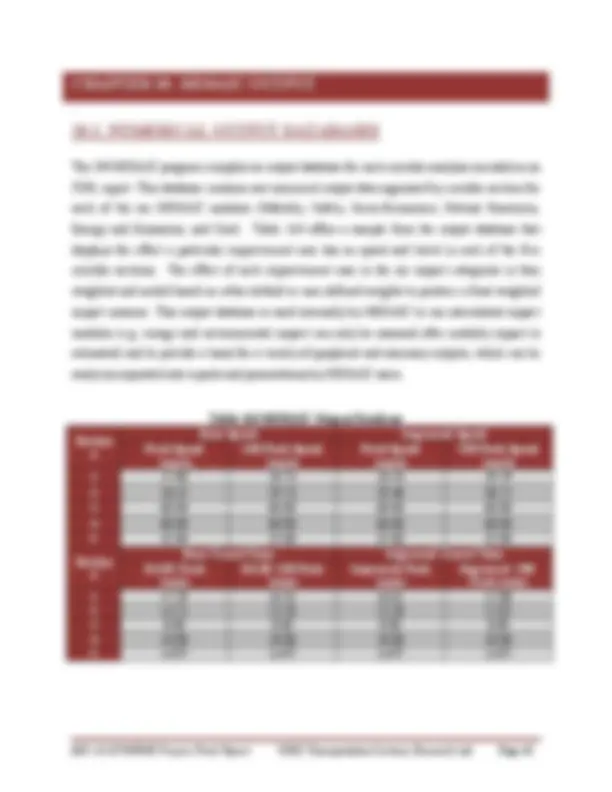
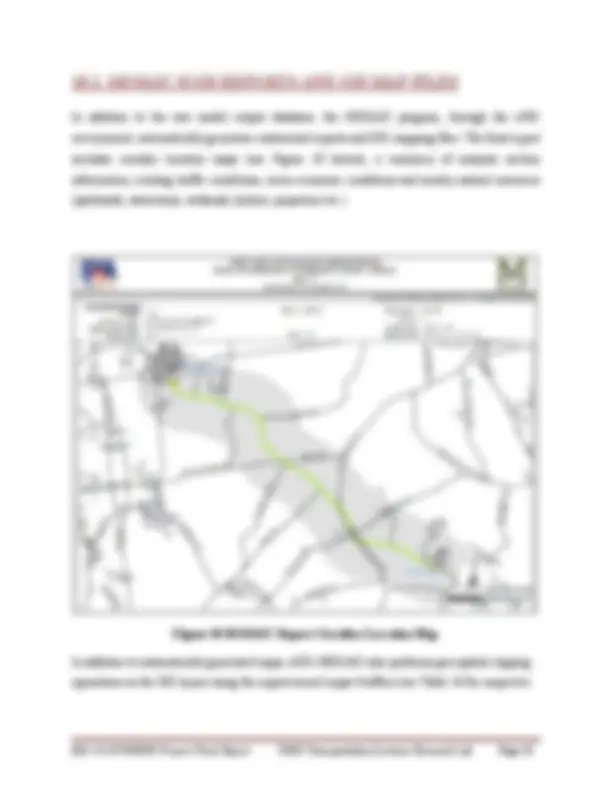
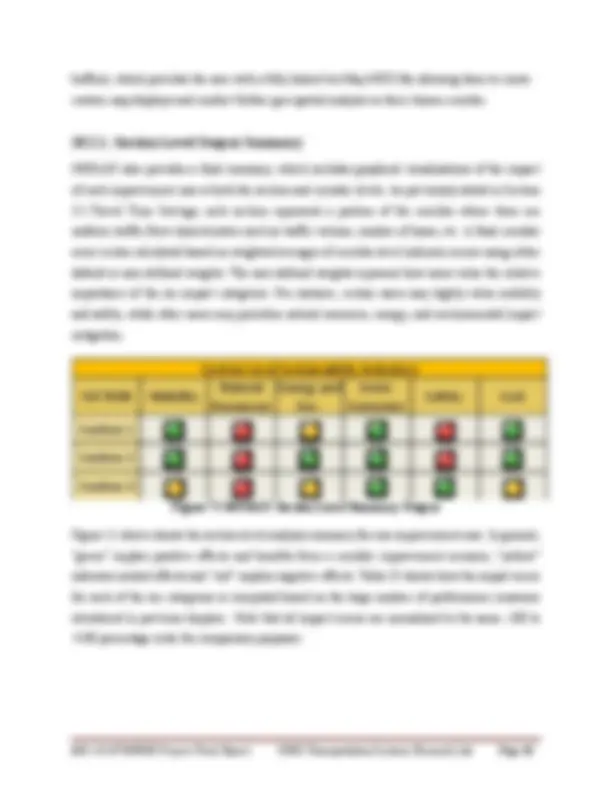
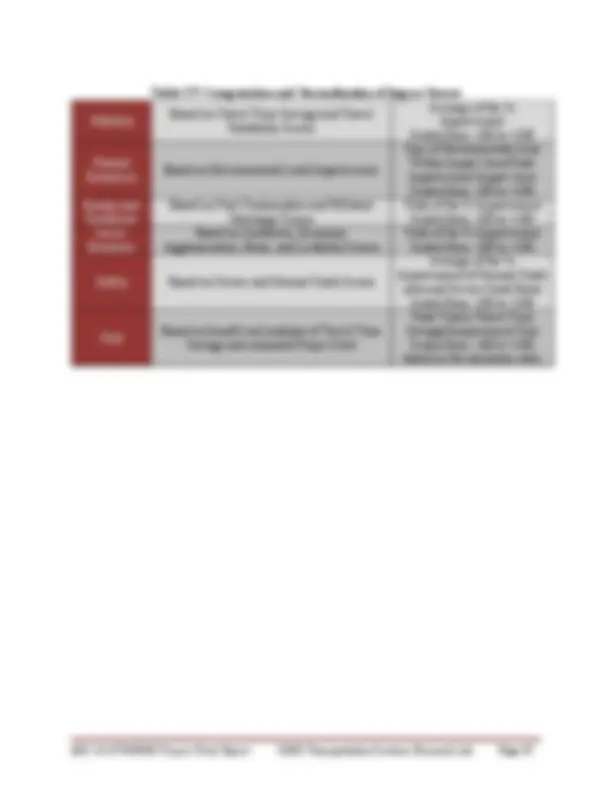
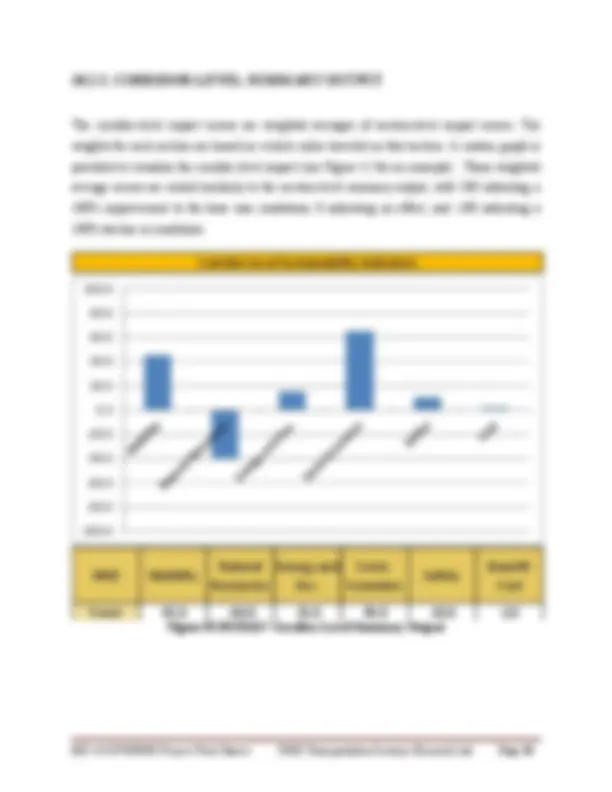
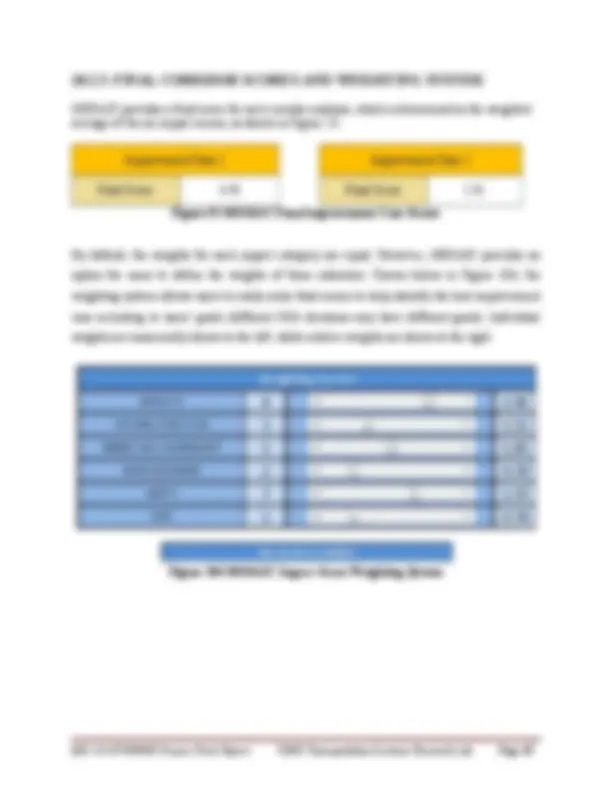
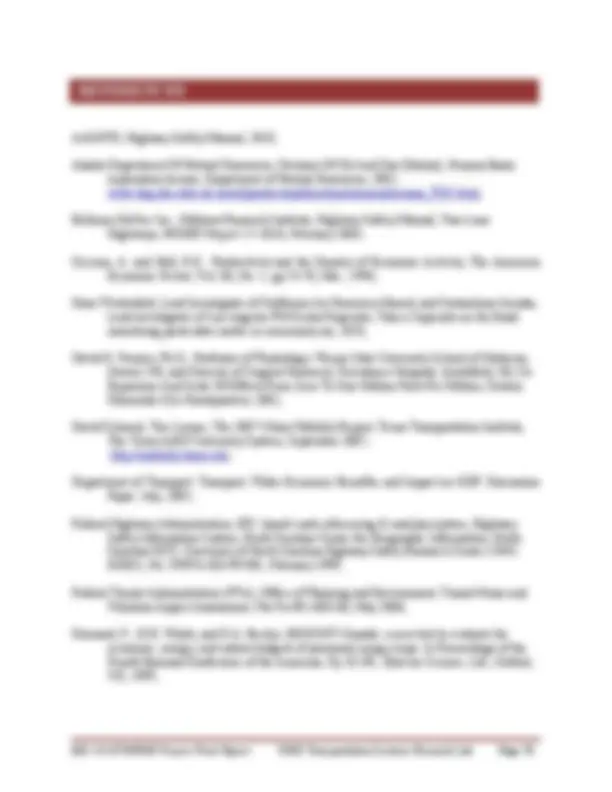
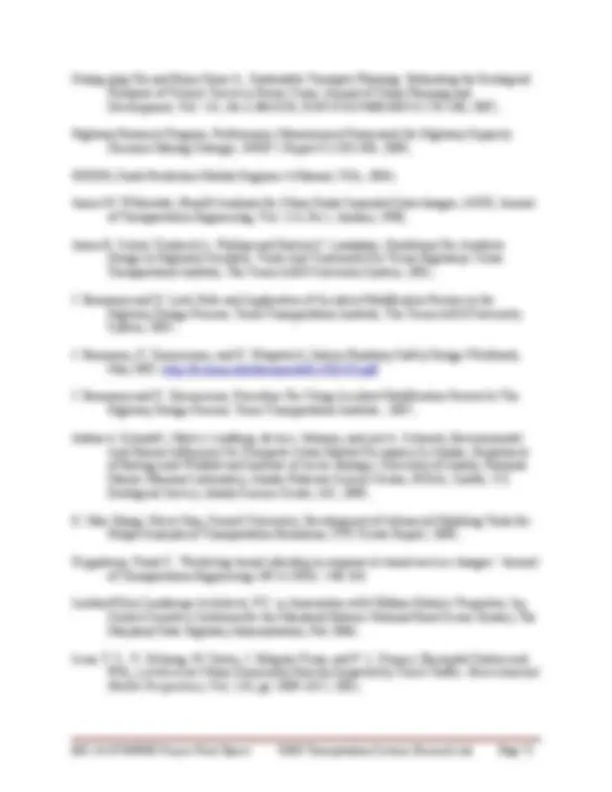
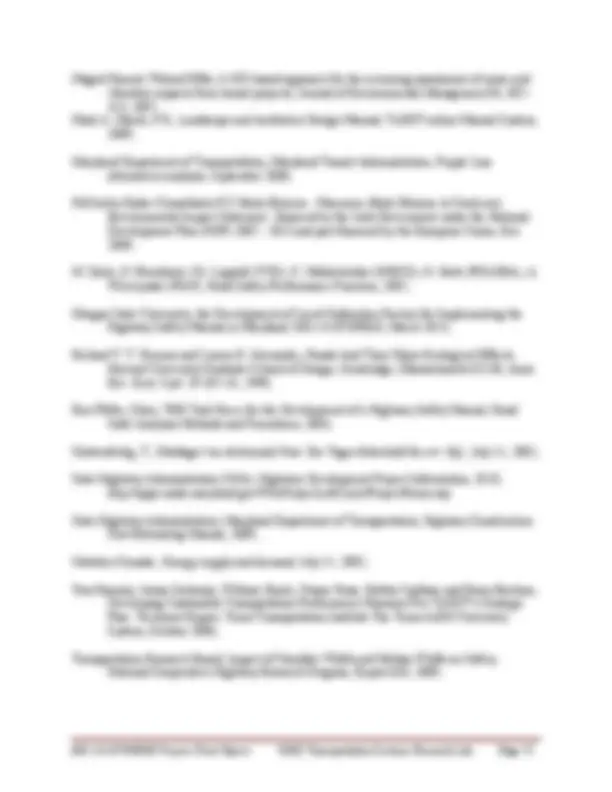

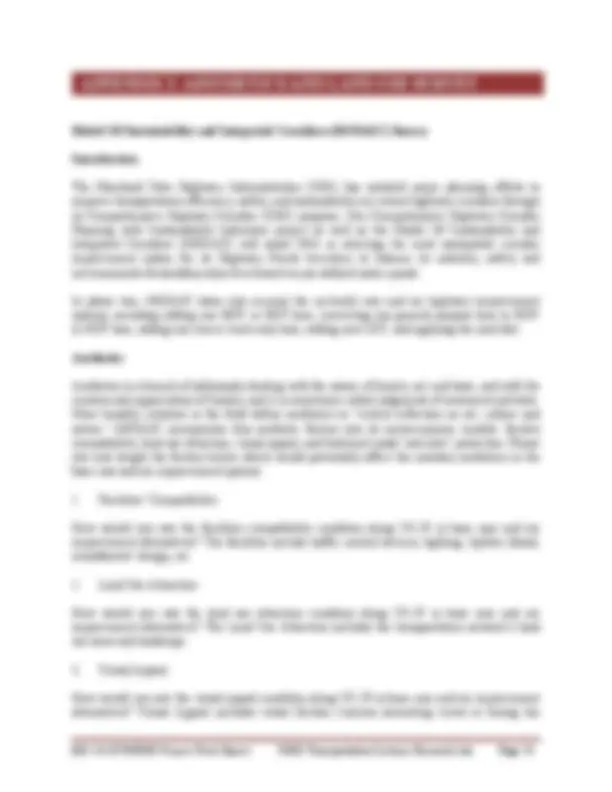
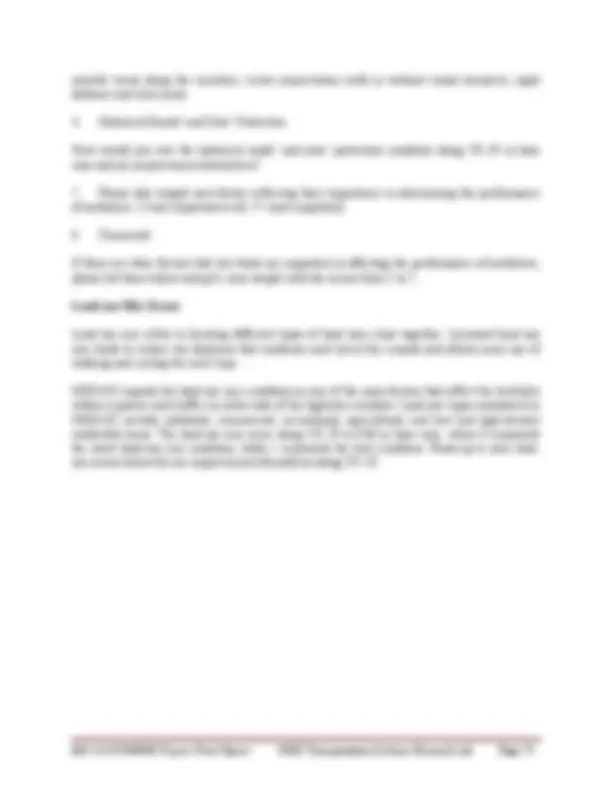


Study with the several resources on Docsity

Earn points by helping other students or get them with a premium plan


Prepare for your exams
Study with the several resources on Docsity

Earn points to download
Earn points by helping other students or get them with a premium plan
Community
Ask the community for help and clear up your study doubts
Discover the best universities in your country according to Docsity users
Free resources
Download our free guides on studying techniques, anxiety management strategies, and thesis advice from Docsity tutors
The final report of a research project conducted by UMD Transportation Systems Research Lab on the MOSAIC (Model of Systematic Analysis of Improvement Choices) project. The report discusses the improvement options considered for a corridor, including geometric and multimodal improvements, and their impact on crash rates and land use. The report also includes crash rate estimation methods and the impact of highway improvements on land use.
What you will learn
Typology: Exams
1 / 85

This page cannot be seen from the preview
Don't miss anything!














































































MD-15-SHA-UM-3-
Lawrence J. Hogan, Jr., Governor Boyd K. Rutherford, Lt. Governor
Pete K. Rahn, Acting Secretary Melinda B. Peters, Administrator
The contents of this report reflect the views of the author who is responsible for the facts and the accuracy of the data presented herein. The contents do not necessarily reflect the official views or policies of the Maryland State Highway Administration. This report does not constitute a standard, specification, or regulation.
MD-14-SP309B4H Project Final Report UMD Transportation Systems Research Lab Page I
The Maryland State Highway Administration (SHA) has initiated major planning efforts to improve transportation efficiency, safety and sustainability on critical highway corridors through its Comprehensive Highway Corridor (CHC) program. It is important for planners to be able to compare various types of highway improvement options during the need analysis and long-range planning processes to select the best program-level plans for the corridor. SHA funded a research project titled “Comprehensive Highway Corridor Planning with Sustainability Indicators” to support the CHC and Sustainability Initiatives and to develop a Model Of Sustainability and Integrated Corridors (MOSAIC), which will help SHA estimate the sustainability impact of multimodal highway improvement options early in the transportation planning and environmental screening processes. The results from this research project can also help SHA achieve its mobility, safety, socio-economic and environmental stewardship objectives.
This research project had three specific objectives:
Based on these research objectives, a team of researchers at the University of Maryland, College Park, worked closely with SHA’s technical liaisons and research staff to successfully develop the MOSAIC tool. Six categories of sustainability indicators (mobility, safety, socio-economic impact, natural resources, energy and emissions, and cost) and more than thirty sustainability performance measures were defined as evaluation criteria for the selection of highway corridor improvement options. MOSAIC considers three geometric improvement options (adding general purpose lanes, removing lanes through a road diet and upgrading at-grade intersections to grade- separated interchanges), six multimodal improvement options (adding high occupancy vehicle
MD-14-SP309B4H Project Final Report UMD Transportation Systems Research Lab Page II
and high occupancy toll lanes, adding express toll lanes, adding bus rapid transit/bus-only lanes, adding light rail transit, and adding truck-only lanes) in addition to the no-build improvement option. Other than analyzing a single improvement option, MOSAIC allows users to select a combination of one geometric improvement option and one multimodal improvement option, which is referred to as the multiple-improvement option. Various quantitative models were developed, calibrated and validated to analyze the impacts of these alternative corridor improvement options on the identified sustainability indicators. Such impacts were then evaluated based on policy considerations and SHA priorities.
The MOSAIC tool was developed through three research phases. In Phase 1, two highway capacity improvement types were considered: adding general-purpose lanes and converting at- grade intersections to grade-separated interchanges. In Phase 2, the research team improved MOSAIC by incorporating a third capacity adjustment option (removing lanes or road diet), and six multimodal highway corridor improvement options: adding high occupancy vehicle, high occupancy toll lanes, express toll lanes, bus rapid transit/bus-only lanes, light rail transit, and truck-only lanes. With Phase 3 research efforts, MOSAIC became capable of analyzing corridor improvement scenario that includes two types of improvements at the same time (e.g., one capacity improvement option plus one multimodal improvement option). In addition, MOSAIC was comprehensively calibrated and validated based on Maryland data.
This project report summarizes the cumulative findings and products from all three research phases of MOSAIC. Certain Chapters from the Phase 1 and Phase 2 projects reports (Chapter 2- from Phase 1 report, Chapter 2-9 from Phase 2 report) are also presented herein, so that a reader does not have to refer to previous reports when learning or applying the MOSAIC tool. Major findings from Phase 3 are summarized in several sections. For instance the method used for evaluating multiple-improvement options is introduced in Chapter 9 Section 9.2. Research efforts and methods for model calibration and validation are presented in Section 9.3. Research findings and results from model calibration and validation can be found in Chapter 3 and Chapter 4, where specific sustainability evaluation modules are also summarized.
MOSAIC is current implemented as a C# program, and has been integrated into the SHA Enterprise GIS (eGIS) environment through a desktop-accessible widget. This integrated MOSAIC-eGIS system leverages powerful GIS datasets in eGIS to drive high-level MOSAIC
MD-14-SP309B4H Project Final Report UMD Transportation Systems Research Lab Page 1
The Maryland State Highway Administration (SHA) is committed to integrating safety, mobility, environmental stewardship, and socio-economic objectives into its transportation planning process through its Comprehensive Highway Corridors (CHC) program. To support its sustainability initiatives, SHA funded the development of a Model Of Sustainability And Integrated Corridors (MOSAIC), which defines sustainability indicators, analyzes the sustainability impacts of corridor improvements, and identifies environmental mitigation needs early in the planning process. The sustainability indicators include mobility, safety, air quality, energy consumption, natural resource impact, pollution and greenhouse gas emissions, socio- economics and cost. When implemented during the highway needs assessment and long-range planning stages, MOSAIC can help SHA identify the corridor improvement option that best balances these sustainability indicators. Also, it avoids recommending options with major negative environmental impacts, as they often require costly and lengthy environmental screening and mitigation procedures. MOSAIC is different from microscopic traffic simulation (e.g. Synchro, Vissim) and EPA emission models (e.g. MOVES) that provide detailed pollution and greenhouse gas (GHG) emission estimates for a particular project with a predetermined improvement type; instead, MOSAIC integrates sustainability objectives before the selection of an improvement type. Furthermore, it incorporates a more comprehensive set of sustainability indicators and provides high-level impact analysis with minimum requirements on staff time and other resources.
A transportation corridor planning study usually consists of several sequential steps that include problem identification, determination of goals and evaluation criteria, development/evaluation of initial alternatives, development/evaluation of detailed alternatives, financial analysis, alternative selection, transportation plan updates, project development and project implementation. The affected communities and interested stakeholders may also be involved in each corridor-planning step. This is essential because the greatest benefits and the most streamlined process of transportation corridor improvements are obtained when relevant agencies and stakeholders are involved early in the planning process. Also, as environmental impact mitigation has to be provided in a proactive and systematic fashion, the multiple corridor projects need to be
MD-14-SP309B4H Project Final Report UMD Transportation Systems Research Lab Page 3
Users first select a corridor for analysis. This corridor is split into sections based on changes in roadway geometry, functional classification and AADT. Users then select either a single improvement option, or a combination of one geometric improvement option and one multimodal improvement option.
Table 1 MOSAIC Improvement Options GEOMETRIC IMPROVEMENTS MULTIMODAL IMPROVEMENTS Add General Purpose Lanes Add High Occupancy Vehicle (HOV) Lane Remove Lanes (Road Diet) Add High Occupancy Toll (HOT) Lane
Convert At-grade Intersection to Grade Separated Interchange
Add Express Toll Lane (ETL) Add Bus Only Lane / Bus Rapid Transit Add Truck Only Lane Add Light Rail Transit (LRT)
As shown above in Table 1, MOSAIC includes three geometric improvement options, and six multimodal improvement options. Through the multi-improvement analysis framework, MOSAIC also allows users to apply both a geometric improvement and multimodal improvement to a section at the same time (i.e. using both a lane removal on a section in combination with installing a light rail line).
MD-14-SP309B4H Project Final Report UMD Transportation Systems Research Lab Page 4
INPUT DATA MOSAIC MODEL OUTPUT DATA Figure 1 MOSAIC Model Framework
As shown in Figure 1, various data inputs are needed including traffic, road geometry, demographic, economic, land use and GIS data. After collecting the necessary inputs through a combination of user supplied values and automatic geo-spatial queries, MOSAIC applies the pivot-point and enhanced incremental mode choice models to generate new mode shares based on the selected improvement alternatives. The results of the mode choice model, together with other inputs, are used in the six calibrated and validated evaluation models, which include mobility, safety, socio-economic, natural resources, energy and emissions, and cost. The results of the six models are then combined to provide a comprehensive evaluation of the improvement option. Through the SHA eGIS environment, a final evaluation report is generated based on the
MD-14-SP309B4H Project Final Report UMD Transportation Systems Research Lab Page 6
Table 2 Sustainability Indicators in MOSAIC Compared with SET MOSAIC SET (TxDOT) Sustainability Categories
Sustainability Indicators TxDOT Goals Performance Measures
Mobility Travel Time Savings Reduce Congestion
Travel Time Index Delay Buffer Index Speed Level of Service (LOS) Travel Reliability Safety Crash Counts and Rate^ Enhance Safety Annual Severe Crashes per Mile Crash Severity Percentage Lane-miles under Traffic Monitoring/ Surveillance Socio- Economic Impact
Economic Impact (^) Expand Economic Opportunity
Land-use Balance Compatibility with Existing Land Use
Truck Throughput Efficiency Within Smart Growth –PFA Boundaries
Increase the Value of Transportation Assets
Average Pavement Condition Score Livability Capacity Addition within Available Right of Way Noise Proportion of Non-single- Esthetics occupant Travel Compatibility with Sustainable Transportation Modes (Transit/Bike/Walk) Cost Costs^ Cost Recovery from Alternative Sources
Energy and Emission
Green House Gas Improve Air Quality
Daily NOx, CO, and VOC Emission per Mile of Roadway Pollution emissions Daily CO2 Emission per Mile of Roadway Attainment of Ambient Air Quality Standards Fuel Consumption Natural Resources
Quantity of and degree of disturbance on Impacted Cultural/Historical Sites, Steep Slopes, Highly Erodible Soils, Wetlands, Waterways, Floodplains Forests, Critical Areas, Springs/Seeps, Bedrock/Geology Areas, Natural Species, Storm Water Facilities, etc
MD-14-SP309B4H Project Final Report UMD Transportation Systems Research Lab Page 7
Travel time savings are computed for each improvement scenario by comparing them with the base-case scenario for peak periods. The general steps for the estimation of travel time savings are: (1) dividing the corridor into several sections, (2) calculating the peak-hour travel time for each section, (3) summarizing the total travel time for the whole corridor, and (4) comparing the total travel time for base and improved cases.
The corridor under consideration should first be divided into several sections based on Average Annual Daily Traffic (AADT). Ideally, each section should have uniform traffic flow characteristics such as traffic volume, number of lanes, etc. Each section may include more than one intersection or interchange. Based on intersection/interchange locations, a section is further divided into multiple links (see Figure 2). With sections and links defined, the methodology for estimating peak hours’ travel time savings can be applied to individual sections in various scenarios. Link-level travel time savings are then aggregated to corridor-level estimates.
Figure 2 Section and Link Definitions in MOSAIC
Link 1 Link 2 Link i
Section
MD-14-SP309B4H Project Final Report UMD Transportation Systems Research Lab Page 9
ViA : The travel speed for arterial streets with at-grade intersections in section i;
Li : The length of section i;
ni : Number of links along section i.
The procedure for estimating freeway and arterial street speeds ( ViF and ViA ) outlined in the Texas Transportation Institute’s Urban Mobility Report (David, 2007) was employed (See Table 3).
Table 3 Speed Estimation Based on Daily Traffic Volume per Lane
( *Here ADT/Lane is in thousands; example: 15,000 ADT per lane has a value of 15 in the equation. )
The travel delay due to traffic signal or stop sign control is based on the Level of Service (LOS) at un-signalized and signalized intersections. The traffic control delay at the intersections was determined (in Table 4) by employing the LOS method from the Highway Capacity Manual (see Table 5).
Facility and Congestion Level
Daily Traffic Volume per Lane
Speed Estimate Equation Peak Speed (mph) Freeway Uncongested < 15,000 60 Medium 15,001 – 17,500 70-(0.9ADT/LANE) Heavy 17,501-20,000 78-(1.4ADT/LANE) Severe 20,001-25,000 96-(2.3ADT/LANE) Extreme >25,000 76-(1.46ADT/LANE) Lowest speed is 35 mph
At-grade Arterial Street Uncongested < 5,500 35 Medium 5,501 – 7,000 33.58-(0.74ADT/LANE) Heavy 7,001-8,500 33.80-(0.77ADT/LANE) Severe 8,501-10,000 31.65-(0.51ADT/LANE) Extreme >10,000 32.57-(0.62ADT/LANE) Lowest speed is 20 mph
Source: David Schrank, Tim Lomax, The 2007 Urban Mobility Report, Texas Transportation Institute, The Texas A&M University System, September 2007, http://mobility.tamu.edu)
MD-14-SP309B4H Project Final Report UMD Transportation Systems Research Lab Page 10
Table 4 Traffic Control Delay at Intersections
(Source: Highway Capacity Manual (HCM), 2000)
Table 5 Level of Services at Intersection Signalized Intersections Unsignalized Intersections Level of Service Average Delay Time(seconds) Level of Service Average Delay Time(seconds) A ≦ 10 A ≦ 10 B >10 - ≦ 20 B >10 - ≦ 15 C >20 - ≦ 35 C >15 - ≦ 25 D >35 - ≦ 55 D >25 - ≦ 35 E >55 - ≦ 80 E >35 - ≦ 50 F >80 F > (Source: Highway Capacity Manual (HCM), 2000)
Facility and Congestion Level
Daily Traffic Volume per Lane Average Delay at Intersections(Seconds per vehicle) Freeway Arterial (^) IntersectionsSignalized UnsignalizedIntersections Uncongested < 15,000 < 5,500 10 10 Medium (^) 15,000-17,500 5,500-7,000 20 15 Heavy 17,501-20,000 7,001-8,500^35 Severe (^) 20,001-25,000 8,501-10,000 55 35 Extreme >25,000 >10,000^80